
BEST COLUMNISTS UNMISSABLE UPCOMING LOTS LATEST UK FAIR LISTINGS ALSO INSIDE An unsung British artist • Auction results • Studio pottery special 2022OCTOBERN0.557VOLCOLLECTINGANTIQUE BestBritshofDiscover the English watch brand making a comeback GLORYCROWNING On the dawn of Carolean age we profile Charles II furniture OCTOBER 2022 Inside: MINIATURESMOORCROFT WHY SMALL IS BEAUTIFUL DARK AGES THE BOOM IN COLLECTINGMACABRE A stylish country house collection up for sale Chic Peek How jewellery has marked generations of death, from monarchs to loved ones Good Mourning










Buy With Us. Sell With Us. sworder.co.ukauctions@sworder.co.uk Stansted | 01279 817778 Hertford | 01992 583508 London | 020 3971 2500 Specialist Sales Advice | Complimentary Auction Valuations | Full Sales Calendar
ere isn’t a great deal we can add to everything that has been written and spoken about the death of Queen Elizabeth II, which we learnt about just as we were going to press. While we were foolish to imagine she could go on for ever, the news came like a hammer blow ending a 70-year reign of steadfast constancy and devotion.
I am grateful to our columnists who were swift in adding their memories to this month’s magazine. We welcome any of your recollections of the late monarch, please email your memories to magazine@accartbooks.com. In next month’s magazine we hope to re ect on her remarkable life and what it might mean for collectors today and in the future.
For readers of this magazine, perhaps more than most, the reigns of kings and queens are the d s on which we build both our knowledge and collections. Regnal e s such as Elizabethan, Georgian and Victorian are our bread and butter, conjuring up centuries of history. To prove the point, on page 2 David Harvey presents us with a room featuring a William and Mary chest-on-stand, alongside a George II tripod table with a George III four poster bed. Such are the descriptions known to us all, instantly bringing to mind the styles for which the periods were famous.
Few of us alive today will have a clear view what Elizabeth II’s long reign will be most remembered. Which of the styles, artists and design movements will stand the test of time? On page 40, with the benefit of more than 350 years of hindsight, Edward Rycroft considers the antique furniture of Charles III’s e e Charles II.
On page 30 we e e the history of mourning rings, from examples of momento mori jewellery to the styles made popular by the late Queen’s great great grandmother, Queen Victoria.
As well as a new monarch, we also e a new inhabitant at Number 10 Downing Street whose role in history is s yet to be seen. The collection of one of Liz Truss’s predecessors, Anthony Eden, who was e s e from 1955 to 1957, goes under the hammer this month. His taste and that of his wife, Lady Avon, was both eclectic and cosmopolitan – have a look on page . the
IN THIS ISSUE
KEEP IN TOUCH
Write to us at Antique Collecting, Sandy Lane, Old Martlesham, Woodbridge, Suffolk, IP12 4SD, or Instagramandwww.antique-collecting.co.ukVisitmagazine@accartbooks.com.emailthewebsiteatfollowusonTwitterand@AntiqueMag
VARRALL-JONESMARIJKE

JOE ROBINSON goes behind the scenes at a special country house sale, page 38


We love
is diamond brooch styled in the Queen’s own handwriting, which sold for £180,000 at Noonan’s sale in June, against an estimate of £4,000-£6,000. e brooch was a gift from the Queen to the Duchess of Norfolk to thank her for standing in duringrehearsals.coronation

THE TEAM
Editor: Georgina Wroe, wroe@accartbooks.comgeorgina.

Online Editor: Richard richard.ginger@accartbooks.comGinger, Design: Philp james@philpdesign.co.ukDesign,
Advertising and subscriptions: Charlotte Kettell 01394 389969, @accartbooks.comcharlotte.kettell
EDWARD RYCROFT considers the appeal of Charles II furniture, page 40 0003-584X
 considers the collectability of Shoji Hamada, page 24
LOUISE BROADHURST reveals her love of antique Oriental rugs, page 8
Georgina Wroe,
considers the collectability of Shoji Hamada, page 24
LOUISE BROADHURST reveals her love of antique Oriental rugs, page 8
Georgina Wroe,
ANTIQUE COLLECTING 3
Enjoy
issue
Editor Welcome
AntiquesubscriptionCollecting £38 for 10 issues annually, no refund is available. ISSN:
FIRST WORD





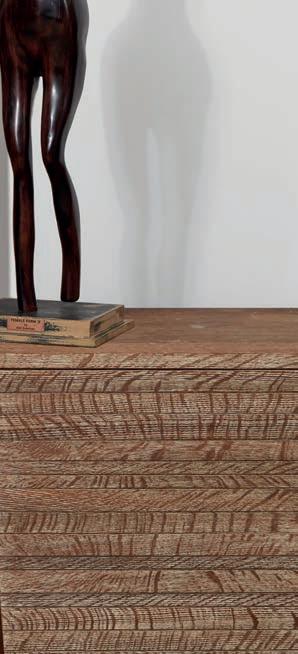



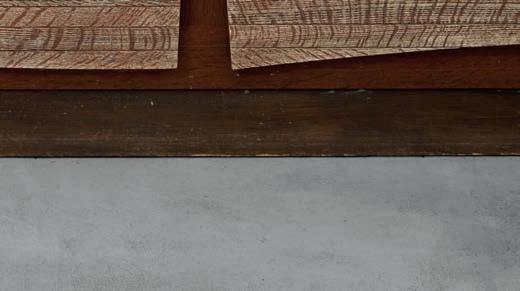

GLORYCROWNING
COVER Two George II walnut and parcel gilt dining chairs bearing the arms of the Altieri family The set of eight has an estimate of £10,000£15,000 at Dreweatts’ sale onOctober 3
REGULARS
3 Editor’s Welcome: Georgina Wroe introduces the issue including tributes to the late Queen Elizabeth II
6 Antique News: All the latest from the world of ne art and antiques, including the sale of an important collection for charity and details of three exhibitions
10 Your Letters: Memories of an exhibition at the British Museum and calls for some energy-saving tips are in the postbag
12 Around the Houses: A lm prop sells for close to £1m, while a prototype Apple computer makes a killing in the US
22 Waxing Lyrical: With the nights drawing in, David Harvey lifts the covers on three spectacular antique beds

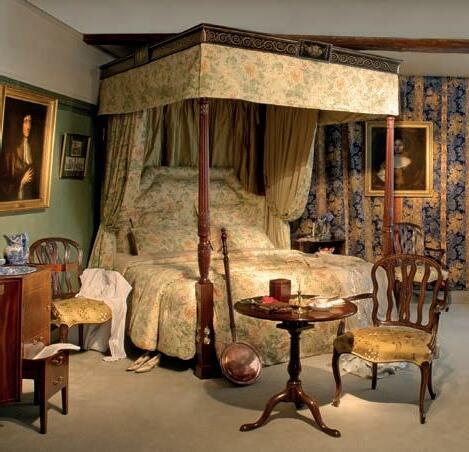
38 Saleroom Spotlight: Furniture commissioned for a country house by the renowned theatre designer Oliver Messel goes under the hammer
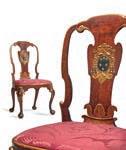


45 An Auctioneer’s Lot: Charles Hanson pays tribute to the late Queen as an item belonging to her great great grandmother appears for sale

46 Puzzle Pages: Settle down with a quiz and crossword from our guessing guru Peter Wade-Wright
52 Top of the Lots: e art collection of the former prime minister Antony Eden goes under the hammer, along with a rare seascape by LS Lowry
54 Fair News: Behind the scenes at the UK’s leading fairs taking place in London, Chester and Warwickshire
56 Fairs Calendar: The latest listings of the unmissable events in your region and around the rest of the UK
58 Saleroom Spotlight: A collection of Moorcroft miniatures goes under the hammer in Berkshire this month s e e s des de de s
60 Auction Calendar: Never miss another sale with our up-to-date listings from the country’s top auction houses and salesrooms
64 Book O ers: Save more than a third on the latest titles from our sister publisher ACC Art Books



66 In Loving Memory: The magazine s ee e d s e e e de e d e e
FEATURES

16 e Dark Age: From mummi ed cats to witches’ mirrors, snapping up of objects of the macabre has never been more popular. Antique Collecting goes over to the dark side
24 West Meets East: Discover why the West Sussex village of Ditchlng was so important to two of the 20th-century’s most important ceramicists
30 Mourning Time: How jewellery has been used to mark death throughout the centuries from monarchs to loved ones
34 e Time has Come: Why an out-offavour English watch brand, which went out of production in the 1970s, is back in vogue
40 Sweet Carolean: On the dawn of a new reign, Edward Rycroft looks back on the furniture of the King’s predecessor Charles II
48 Denis the Menace: Discover the work of an unsung hero of 20th-century art, Denis Wirth-Miller, whose work goes on show this month
ANTIQUE COLLECTING 5 THIS MONTH
Contents
VOL 57 NO 5 OCTOBER 2022 ALSO INSIDE An unsung British artist Studio pottery special BestBritshofDiscover the English watch brand making a comeback
On the dawn of the next Carolean age, we profile Charles II furniture OCTOBER 2022 Inside: MINIATURESMOORCROFT WHY SMALL IS DARK AGES A stylish country house collection up for sale Chic Peek How jewellery has marked generations of death, from monarchs to loved ones Good Mourning FOLLOW US @AntiqueMag
22 12 52 40 TO SUBSCRIBE TODAY VISIT WEEKDAYSWWW.ANTIQUE-COLLECTING.CO.UK/SUBSCRIBEFROM9.30AMTO1PM, 38
A NTIQUE news GOING ON IN OCTOBER

Above A group portrait of Elizabeth, Charles and John Bonhams’£30,000-£50,000isDerbyofcataloguedArkwright,asthecircleJosephWrightof(1734-1797),estimatedtomakeatsale

Left e interior of Kinsham Court with a mid-Victorian walnut music table, which is estimated at £2,000£3,000
Right BADA member Christopher Claxton Stevens at the museum. Image © Ben theofPhotography,McDadecourtesyBethlemMuseumofMind
FRIENDLY GESTURE
A photograph by the award-winning contemporary surrealist photographer, Benji Reid (b. 1966), has gone on show at a Kent museum, thanks to the nancial contribution of the Friends of the BADA (British Antique Dealers’Reid,Association).whodescribes himself as a choreo-photolist, won a 2020 Wellcome photography prize for the 2016 work called Holding onto Daddy, which is now on view at the Bethlem Museum of the Mind.

e museum is based on the site of the historic Bethlem Royal Hospital in the suburbs of south-eastern London and houses more than 1,000 artworks by former patients and mental health-service users.
Arkwright move
Contents from the Herefordshire home of the Arkwrights, one of the most famous families of the Industrial Revolution, go under the hammer this month.

While the Arkwrights lived in Kinsham Court in the 20th century it had previously been the childhood home of Florence Nightingale and later rented by Lord Byron. Richard Arkwright (1732-1792) played a crucial role in the invention of the Spinning Jenny, which revolutionised cotton manufacturing. e sale at Bonhams New Bond Street on October 12 is made up of 195 lots of paintings, furniture, tapestries, books and ceramics.
Magic majolica
After two successful tours of the US, an exhibition celebrating the wonder of majolica comes to Stokeon-Trent this month.
Majolica Mania: Transatlantic Pottery in England and the United States, 1850–1915 October 8 at the Potteries Museum and Art Gallery and is on show until nextAJanuary.number of iconic Minton pieces from the museum’s own collection will be included along with more than 150 exceptional works, many from private American collections.
Below right Henry Fuseli (1741-1825) Two courtesans in a theatre box, with fantastic hairstyles, c. 1790, Auckland Art Gallery
Below Mintons Ltd. teapot, Whitecollection.majolicaearthenware1894,withglazes.PrivatePhotoBruce

HAIR RAISING
Extravagant coiffures and 18th-century high fashion are at the centre of a London gallery’s latestFromexhibition.October 14, The Courtald will unveil work by the Anglo-Swiss artist Henry Fuseli (1741-1825), revealing his lifelong secret obsession with all things female.

Fuseli spent 21 years as keeper of the Royal Academy schools, working and living at Somerset House which is now The Courtauld Gallery.
While his public paintings depicted masculine heroes and classical subjects, in private he was devoted to portraying the female figure.
A round-up of all the latest news and events for collectors and ne art a cionados this autumn
NEWS All the latest
WHAT’S
6 ANTIQUE COLLECTING
1Making an Impression

Described as a “once-in-a-generation” exhibition, 80 paintings, watercolours and drawings by Paul Cezanne (1839-1906) go on show at Tate Britain this month. Referred to as the “greatest of us all” by Claude Monet, Cezanne remains a pivotal gure in modern painting. e exhibition, from October 5 to March 12, 2023, explores 25 years of the artist’s career, including over 20 works never seen in the UK before such as e Basket of Apples, c.1893 ( e Art Institute of Chicago), Mont Sainte-Victoire, 1902-1906 (Philadelphia Museum of Art) and Still Life with Milk Pot, Melon, and Sugar Bowl, 1900-1906 (private collection).
3Arty party
An exhibition exploring the Pre-Raphaelites’ enduring fascination with the legend of King Arthur opens at the William Morris Gallery in Walthamstow this month.

e Legend of King Arthur: A Pre-Raphaelite Love Story, from October 14 to January 22, considers how the Arthurian legend, as told in Malory’s Le Morte d’Arthur, 1485, sparked a reawakened interest in medievalism in Victorian England.
e Pre-Raphaelites chose the legend as a source of artistic inspiration in tapestries, paintings and drawings. e exhibition also highlights the role of Pre-Raphaelite sisters, including Lizzie Siddall, who was married to Rossetti and is better-known as the model for John Everett Millais’ Ophelia.


Left Paul (1839-1906)Cezanne Mont SainteVictoire, ofPhiladelphia1902-1906,MuseumArt

Above right Helen Saunders (1885-1963) Cabaret, c. 1913-1914. e Courtauld, © Estate of Helen Saunders
Far right Helen Saunders (1885-1963) Vorticist composition (Black and Khaki), c. 1915. e Courtauld, © Estate of Helen Saunders

Right Helen Saunders (1885-1963) Green,composition,VorticistBlueand c. 1915. e Courtauld, © Estate of Helen Saunders

to see in October3

Above far left Paul Cezanne (1839-1906) Still Life with Apples, 1893–1894, J Paul Getty Museum

Above left Paul Cezanne (1839-1906) Bathers, c.1894-1905, presented by the National Gallery
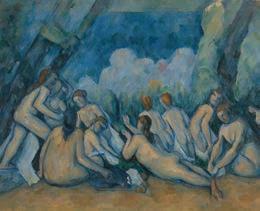
2 Rebel’s return
e work of Helen Saunders (1885-1963), one of only two women to join the Vorticists, a radical but short-lived artistic movement that emerged on the eve of WWI, go on show in London this month.

Helen Saunders: Modernist Rebel, on at he Courtauld from October 14 to January 29, will be the first monographic exhibitiondevoted to the artist in more than 25 years.
It will showcase a remarkable group of 18 drawings and watercolours, some capturing the dynamism of modern urban life and the horrors of mechanised warfare.
Only in recent years has Saunders’ work begun to be rediscovered and recognised as a vital piece in the story of British modern art.
Above right Arming and Departure of the Knights, tapestry, Morris & Co., 1891-1894, © Creative Commons Trust)(BirminghamImagesMuseum
Right William Morris (1834-1896) La Belle Iseult, 1858, © Tate Images
Far right John William Waterhouse (18491917) Study for e Lady of Shalott, 1894, © Falmouth Art Gallery
ANTIQUE COLLECTING 7
Chocks away
A Scottish museum is toasting its success after opening its doors on the country’s only escape room game situated on an historic airfield.
The museum, located in East Fortune Airfield, East Lothian, played host to dozens of teams as they sought to solve fiendish puzzles to prevent an imaginary attack on the local town of North Berwick.
Inspired by its location on the UK’s bestpreserved WWII airfield, “Operation intransportedSabotage”visitorsbacktimeto1942.

MAKING AN IMPRESSION
Édouard Manet’s (1832-1883) portrait of his only pupil Eva Gonzalès (1849–1883) is the rst in a new series at the paintingswell-knownGalleryNationalexploringthrough a contemporary lens.
Gonzalès, who died in childbirth at the age of 34, was Manet’s only formal pupil, entering his studio in 1869 at the age of 22.
Above Édouard Manet (1832-1883) Eva Gonzalès, 1870, Sir Hugh Lane Bequest, 1917, e National Gallery

experienceShattering
Eight newly-conserved ancient glass vessels, which were damaged in the 2020 Beirut port explosion, have gone on display at the British Museum.

The vessels, which date to Lebanon in the 1st century BC, which was a time of great advancement in glass-blowing technology, were pieced back together by the museum’s conservation laboratories.
Situated 3km away from the explosion point, the American University in Beirut (AUB) sustained heavy damage during the explosion on August 4, 2020. The repaired glasses will be on display until October 23.
Above One of eight pieces of glassware on display at the British
NowMuseumrequiring
full restoration, the car was bought new by Philip Bushell, a wealthy Australian tea merchant who later sold it to a farmer who, using it on the farm, painted its original yellow exterior black.
After failing its MOT in 1968 it was relegated to the shed and bought by the current owner, the farmer’s grandson, in 1971.
One careful farmer owner
A 1935 Bentley, stored under a blanket in a cart shed for 68 years, has an estimate of £50,000£70,000 when it goes under the hammer in Dorset this month.

e car is part of Auctioneer’sCharterhousesale of classic cars at Haynes International Motor Museum, Sparkford, on October 12.
Left e Bentley outside Bushells tea factory in Sydney, c 1936
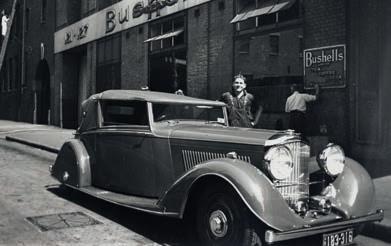
Above e car was left in an old cart shed for 68 years
30 seconds with...
Christie’s international head of rugs and carpets, Louise Broadhurst

How did you get involved in the antiques business?
The auction world has probably always been in my blood. I remember as a young girl sitting in my grandfather’s corner office at pink (where he was director of the medals department and the Queen’s personal medallist)and packing the orders into little tissue-filled boxes.Itwasn’t until I graduated from University College London in 1998 that I joined Christie’s for a six-month internship. Some 24 years later, almost all of it spent in Oriental carpets, I am
very fortunate to remain in a field that I love.
Why did you specialise in Oriental rugs and carpets?
Few institutions cover this areain their coursework so it really was a matter of seeing and touching as many pieces as possible, listening and learning from my former colleagues and other key figures in the field and leafing through endless past sale catalogues. The job has taken me around the world to some extraordinary locations and introduced me to some highly individual and extremely memorable characters.
What has been your best sale to date? I will always remember the gentleman who arrived unannounced at the valuation counter with a Sainsbury’s bag containing a rather grubby rug his mother had hung on her wall for years. As I pulled it out of the bag I saw its quality. It had been woven in the late 16th/early 17th century in Safavid Persia,
and was one of just five rugs known with an almost identical design. It was called a ‘Perez’ Topkapi prayer and named after three in the Topkapi Palace Collection in Istanbul. It sold for £245,000
Top tip for Oriental rug collectors? Look for carpets that are handwoven and with natural dyes. Synthetic dyes became increasingly popular after 1900 but do not have the same tonal nuances as natural ones. It is possible to find carpets from the end of the 19th century, and sometimes earlier, that remain in wonderful condition and will far outlive many modern productions as the wool and craftsmanship involved in their creation was far superior to many machine-made carpets one finds today.
Christie’s sale of art of the Islamic and Indian worlds including Oriental rugs and carpets takes place on October 27
Below National Museum of Flight has launched its new escape room experience
8 ANTIQUE COLLECTING NEWS All the latest
Rich taste
is month sees the sale of 1,500 artworks from the Ann and Gordon Getty Collection, which could become one of the biggest ever charity Spanningauctions.October 10-25, 10 sales are expected to make $180m for the couple’s foundation. Gordon Getty (b. 1933) is the fourth son of John Paul Getty (18921976) who founded Getty Oil in the 1940s. Having been named the world’s richest private citizen in 1966, his estate was put at $6bn.Gordon’s wife, Ann, who died in 2020 aged 79, was a devoted benefactor of artistic and scienti c causes.
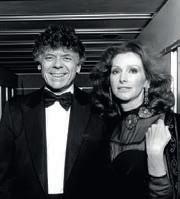
In 2018, Peggy and David Rockefeller’s collection became the most expensive charitable auction in history when it fetched $832m dollars in New York.
CLAY IN THE LIFE
York Art Gallery has acquired a ceramic work by the British potter Phoebe Collings-James (b. 1988), which is currently on show at its exhibition Body
Grave concerns


e capital’s seven major cemeteries take centre stage at this month’s London Month of the Dead, which also sees 50 talks, walks and workshops.TheMagnificent Seven graveyards of Kensal Green, West Norwood, Highgate, Abney Park, Nunhead, Brompton and Tower Hamlets were all created from 1832-1841 to meet the needs of the city’s burgeoning population.
Vessel Clay. Titled How many times can I surrender to you? the piece was the result of Collings-James’ attempts to push clay into new forms while exploring its structural qualities.
York Art Gallery’s ceramics curator, Helen Walsh, said: “This acquisition is an exciting addition to the York Art Gallery’s rich collection of work by leading British ceramicists from the 19th century through to the present day.”
Above left Phoebe Collings-James and her piece which has been bought by York Art Gallery

Diana Steel (1939-2022)
As we mourn the passing of the late Queen, we also remember the redoubtable matriarch of the Antique Collector’s Club, and founder of this magazine, Diana Steel, whodied in August, aged 82.

Diana, her husband John Steel and the former editor, John Andrews (who died last year), founded the Antique Collectors’ Club in 1966, initially printing pamphlets on a kitchen
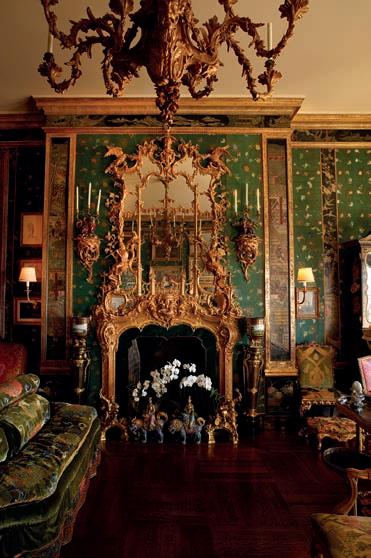
Beforetable.long, with its trademark emblem of a dog on the book’s spine, the company established itself as a leadingpublisher of books on antiques and decorative arts, including the best-selling titles Jackson’s Hallmarks, British Antique Furniture and Understanding Jewellery.
Great praise

Authors included specialists andexperts in the art world and TV personalities from the Antiques Roadshow, many of whom were fulsome in their praise. Glass expert Andy McConnell said: “Diana Steel was a force of nature and, as a publisher of more than 600 books on a vast and eclectic range of art and antique subjects, something of a national treasure. Under her direction ACC became established as a beacon of quality andACCauthority.”
Art Books' current publisher and CEO, James Smith,said: “Diana had a true entrepreneurialspirit and was not easily overawed by any opportunity. It was these qualities that led her to purchase her own printing presses,which were housed at the publisher’s HQ in Woodbridge in Suffolk.”
Now in its ninth year, the festival aims to inform, entertain and provoke conversation on the subject of death and the city, with events in Brompton and Kensal Green cemetery chapels.
On October 1, taxidermist Suzette Field hosts a workshop beginner’s course on butter y taxidermy at Kensal Green Cemetery. For more details go to www.londonmonthofthedead.com

Above right Brompton cemetery is one of the locations for this year’s London Month of the Dead

Right A taxidermy class, part of a previous festival
She continued to print her own books on-site well into the 1990s, expanding the sales network into America where she would regularly travel to major cities selling her books to the key booksellers.
Diana sold the company in 2016 having runit for five decades - an incredible and inspirational achievement.
Today, the company she started more than 50 years ago, is known as ACC Art Books and publishes more than 50 new titles a year.
Above Diana Steel among the hundreds of books she published © East Anglian Daily Times
Above left Ann and Gordon Getty, 1988, photo Bruce Forrester
Above Dining room of Ann and Gordon Getty’s San Francisco residence, © Visko Hat eld for Christie’s
ANTIQUE COLLECTING 9
LeYourtters
Our letterstarreceives a copy of British Designer Silver by John Andrew and Derek Stiles worth £75. Write to us at Antique Collecting, Sandy Lane, Old Suffolk,Woodbridge,Martlesham,IP124SD or email accartbooks.commagazine@

Star letter
I wonder if, inthese straitened times, my fellow subscribers have any tips on using any antiques or collectables in their possession for saving money? remember my fru Scottish grandmother cooking porridge in the embers of a re overnight which I have, slightly tongue in cheek, suggested to mywife using our antique cast iron skillet.
What else could we do to save money…para n lamps, washing dollies..? I would loveto hear from other cash-strapped readers. Doug Monroe, by email
As someone new to the collecting world, I subscribed to your informative magazine and have since dipped my toe into auctioning items on popular online sites, such as eBay. But when visiting dedicated sites, which buy and sell antiques, it seems a totally different world.
I’m sure I am not the only one who finds this type of buying and selling di cult to grasp. I was wondering if you could put together a short item in your magazine covering the basics and giving helpful tips?
I nd the information in your magazine is always invaluable for the insight it gives and will continue to enjoy each edition.
Mrs M Hobbs, Peterborough, by email.
Above right Janice remembers a special day and a chicken Kiev
Left Should Doug use a washing dolly? Image © Amgueddfa Cymru, National Museum Wales

Below left Could online auction sites be easier to navigate?

How thoroughly I enjoyed Marc Allum’s column in last month’s magazine (Marc My Words, September issue), which summoned up some very happy memories for me.
I, too, queued for admission to the Tutankhamun exhibition at the British Museum, perhaps alongside Marc and his family. I was seven at the time and still remember all the gold and turquoise. also vividly recall the meal we had at a nearby Italian restaurant where I remember having chicken Kiev for the first time.

While the visit may have sparked a laud ble lifelong love of history for MarcAllum, it put in motion alifelong love of food for me!I am now a chef (but still own my Tutankhamun pencil sharpener from ahappy day out).
Janice Preston, by email
Answers to the quiz on page 46
Q1 (c). Q2 (a). Q3 (d) The first issue 1941. (c) was, to many, its first memorable challenger, launched in 1945. Q4 (c) It was the ‘Utility’ symbol guarantee of quality of post-WWII goods. Q5 (b). Q6 (b). Q7 (c) Kunst und Lehrbüchlein (1580) and it is the first book known to have a printed picture of a child holding a doll. Q8 (d) Just like a snake at rest, although a symmetrical ‘lovers’ knot’ is more common. Q9 (c). 10 (b) It has been suggested that the sharp edges wore away at the harness, although diamonds enclosed in circles were made.
Finally, clear tuition can be rearranged to form reticulation; trite bylaws can be rearranged to form barley twist; imp aped hunk can be rearranged to form pumpkin head and stray pet can be rearranged to form tapestry
A call for help from a moneyconscious reader and memories of a special exibition are among this month’s mailbag
‘What else could we do to save money...paraffin lamps, washing dollies? I would love to hear from other cash-strapped readers.’
10 ANTIQUE COLLECTING
LETTERS Have your say



THURSDAY 6 TH OCTOBER | 09:30 CATALOGUE NOW ONLINE A celebration of British Continental and International Design Movements from 1860-1960. To Include ceramics, paintings and prints, jewellery, silver, furniture, glass and the wider decorative arts. Contact us today info@dawsonsauctions.co.ukdawsonsauctions.co.uk 0207 431 9445
A ROUND the HOUSES
Wilson 55, Nantwich
A 1972 painting by the Oldham artist Helen Bradley (1900-1979)

set a auction se record when it sold for£44,000, smashing its low pre-sale estimate of £15,000 at the Cheshire auctioneer’s recent sale.

Despite winning a scholarship to Oldham Art School in 1913 Bradley only started to paint aged 65 to give her grandchildren an insight into her own Edwardian childhood.
At the auction house’s jewellery sale on September 15 an early 20th-century French diamond and pearl brooch in the shape of a swan sold for £2,300, beating its estimate of £700-£900. e 4.4cm piece had the French maker’s mark EM and came in an Asprey case.

Rock Island Auction, Illinois
e prop gun Harrison Ford used in his role of Han Solo in the 1977 lm Star Wars sold for over $1m – twice its pre-sale guide –at the US auction house.

e iconic ‘blaster,’ a converted Mauser pistol modi ed to only shoot blanks, was the last of three created for use in the lm. It had been previously considered missing and presumed lost forever. e gun had been in the inventory of Bapty & Co., a London prop house that provided numerous weapons for Star Wars: A New Hope
Instead of bullets, the blaster res consecutive and cohesive bursts of light-based energy referred to as bolts.

Bellmans, Wisborough Green
A Regency rosewood parcel gilt scroll-end chaise longue de ed its pre-sale estimate of £400 when it sold for £4,200 at the West Sussex auctioneers with a matching sofa (with the same estimate) selling for £3,200. Both came from Shakenhurst Hall in Cleobury Mortimer, Worcestershire, the one-time home of Michael Severne and his wife, Rachel, a famous model and socialite in the 1950s.

Head of Bellmans London, Harrison Goldman, said: “Having been assembled over generations and not always studiously catalogued, collections like this often hide the unexpected among what we would expect to nd in a Grade II-listed Georgian style house.”
 The Star Wars prop, used by Harrison Ford, sold
The Star Wars prop, used by Harrison Ford, sold
AUCTION Sales round up 12 ANTIQUE COLLECTING
From a ring worn by Elvis Presley to a collection of circus posters, the salerooms have not disappointed this month The estimatebroochswanflewpastitstosellfor£2,300 On the Evening of Christmas Day set a record for a work Bradleyby
for more than $1m Both estimatestheirsoaredpiecespastpre-saleattherecentsale thelongueRegencyThechaisecamefromGrade-IIlistedShakenhurstHall
Che Cambridgens,
A 2007 Daniel Roth
‘Masters Ellipsocurvex Papillon’ watch sold for £13,000 against an estimate of £4,000-£6,000, at the East Anglian auctioneers.
Roth was born into a watchmaking family in Nice and, following stints at Jaeger-LeCoultre, Audemars Piguet and Breguet, launched his own brand in 1988, which was eventually sold to Bulgari.

Today, Roth produces one-o creations under the Jean Daniel Nicolas name. Working closely with his wife and son, the brand completes around three pieces a year. His curious-shaped watches are a favourite among collectors.
GWS Auctions, Agoura Hills
An 18-carat “ at’s the Way It Is” lion head ring, with tsavorite eyes and a red garnet in its mouth, sold for $162,500 at the American auctioneer’s recent sale of the “lost” jewellery of Elvis Presley.

According to the auction house, Presley commissioned his Beverly Hills jeweller to custommake the ring prior to the lming of the 1970 MGM documentary, Elvis: at’s the Way It Is. e striking ring was the jewelleryhighest-grossinglotinthesale.

RR BostonAuction,
A prototype of Steve Jobs’ Apple1 computer sold for $677,200 at the tobyauctionAmericanhouse.ItwasusedJobsin1976pitchtheApple-1 to Paul Terrell, ow of e Byte Shop in Mountain View, California. While Jobs saw it as a part of a $40 do-it-yourself kit, Terrell s es ed e fully assembled personal computer se $666.66. The first 50 orders for the models we e described by Steve Wozniak as: “ e biggest single episode in all of the company’s history.” An Apple iPhone rst generation, sealed, new-in-box example sold for $35,414 at the same sale.

Mallams, Cheltenham
A oil on canvas of a wintry scene was the star lot at the Gloucesterhire saleroom’s recent sale when it quadrupled its low estimate to fetch £4,000.
Titled Old Barn and Winter Trees on the Isle of Grain, North Kent, it was by the American-born English landscape artist and book illustrator Rowland Hilder (1905-1993).

Hilder moved to England from Long Island with his family in 1915 and studied at Goldsmith’s College of Art in south London. His interest in the English countryside developed into a lifelong passion for drawing and painting landscapes. He also created a number of illustrations for Shell-Mex and BP.
LeyburnTennants, An ofitsaleopardshapedor‘StaorBirmingham,18th-centurySouthordshiregural’snuboxbonbonniere,asaattackinghuntersmashedpre-saleestimate£200-£300tosellfor
£1,900 at the North Yorkshire auction house’s recent sale.
Measuring 9cm inlength, it was not in thebest condition but its rarity was re ected in the sale price.
At another sale a silk top hat by the London makers Lincoln Bennett & Co., sold for £680 topping its pre-sale guide of £80-£120. The hat, in size 7 3/8 came with an original paper label from the Burlington Gardens hatter inside it, with a hat box and cover from Scotts in Bond Street.
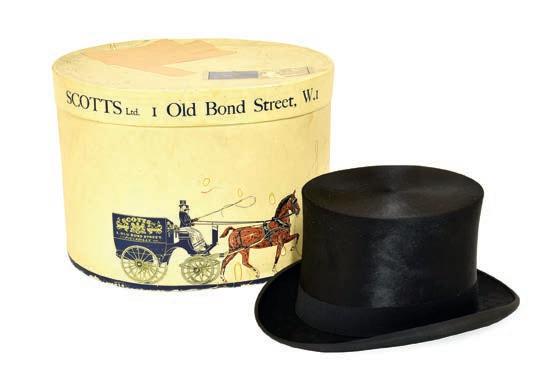 The elegant silk hat sold topping
The elegant silk hat sold topping
ANTIQUE COLLECTING 13
The wasRothDanielwatchsoldtoanAustraliancollector thecommissionedElvislionheadringfora1970docu-mentary winterevocativeThescenepiquedtheinterestofbidders Experts call the prototype the holy grail of Steve Jobs and Applebiliamemora- The damagedsnuff‘figural’boxwasbutstillexcitedbuyers
for a very
£680 in a Yorkshiresale
Elmwood’s, Notting Hill
A tourmaline and diamond tiara sold to a private UK collector for £57,500 at the London auctioneer’s recent sale. Containing over 70 carats of green tourmalines, the piece had been expected to makeElmwood’s£30,000-£50,000.co-owner, Ben Gosling, said: “ e result was testament to the strength of the market, even in these uncertain times. Collectors are willing to bid competitively for pieces that are not just rare and well-preserved examples, especially signed pieces by Cartier, Van Cleef and Arpels and Boucheron.”
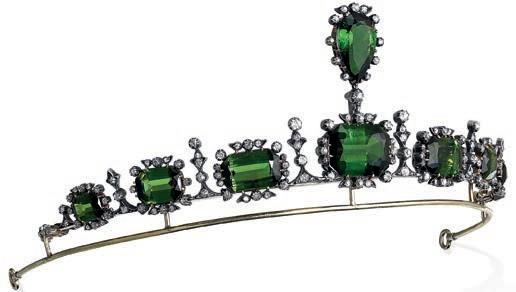
To prove the point an art deco brooch by Boucheron, made up of more than 13 carats of diamonds in a black enamel £42,000,hammeredborder,forwithin its guide price.
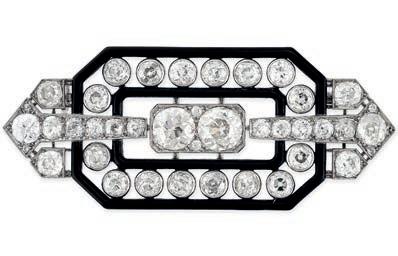
Gildings, Market Harborough
A rare Edwardian tile panel from a private collection of Pilkington’s Royal Lancastrian Pottery tripled its low estimate of £5,000 at the Leicestershire auction house’s sale on September 6 when it sold for £17,000.
e 4ft-wide lustre- red tile panel featuring St George and the Dragon came from the collection of Abraham Lomax, a chemist at Pilkington’s during its 1904-1908 heyday, when some of the rm’s most in uential designers were producing arguably some of its most acclaimed pieces.
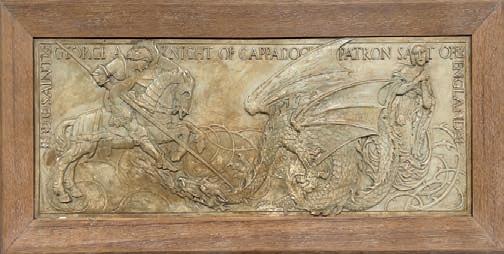
At the same sale a hand-thrown vase just 1cm high, known to Pilkington’s fans as a ‘twi er’, sold for £80. e whimsical miniatures were thrown by the renowned potter Edward T.Radford newexperimenttowithshapes.

Ewbank’s, Woking
A collection of original artwork and posters from W.E. Berry Ltd., which produced designs for the Ealing Comedies and Universal Studios, as well as railway companies and circuses, fetched an estimate-busting £19,000 at the Surrey auction house.
One of the top sellers was the original hand-painted artwork for Bertram Mills’ Circus at Olympia which having been expected to make £300-£500 sold for £2,500. Artwork on a board for Robert Bros. Circus had a guide of £150-250 but sold for £1,300, while original handpainted artwork for Bertram Mills Circus went for £800 against hopes of £100-£150. Specialist Alastair McCrea said: “It was clear existing W.E. Berry fans were keen to acquire whatever was on o er.” but
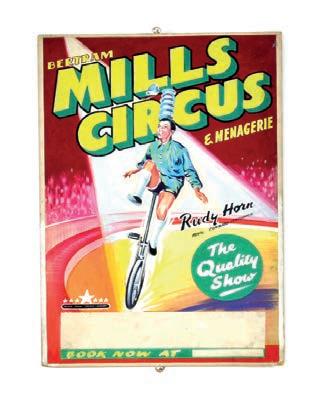



Chiswick Auctions, west London
A previously unknown sketchbook of watercolours relating to the California Gold Rush and the famous orty iners sold for 20,000, far beyond its low estimate of £2,000-£3,000.
e rare 76-page document records theplaces and characters seen by the amateur artist and adventurer Joseph Bru (1804889) as part of an 1849-1851 expedition to California.
Washington-born Bru was forced to leave the military academy West Point after a duel, workingas an itinerant seaman, draftsman and cartographer beforeheading west in 1849. After a winter in the Sierra Nevadas he arrived in the gold country, making drawings ofgeographic landmarks, mining camps, and scenes which piqued his interest. His work is held by the National Archives, the Library of Congress, the Huntington Library, Yale University Library, and the Smithsonian. Although his rare.tomaterialupoccasionallyworkscomeforauction,relatingtheGoldRushis
14 ANTIQUE COLLECTING AUCTION
The alwayscollectorspricesoaringshowswillpayforquality broochartThedecowas by the FrenchrenownedmakerBoucheron posterThehad been expected to make £300-£500
sold for Millsworkpainted£2,500Handart-forBertramCircussoldformanytimesitsestimatePromotingtheRobertBrothers’MammothCircus,thepostersoldfor£1,300 The CaliforniandocumentedsketchbookGeorgedepictedtileimpressivepanelStandtheDragonThetheGoldRushof1849The was‘twiffler’tinyvasepresentedtoguestsatPilkington’sfactory
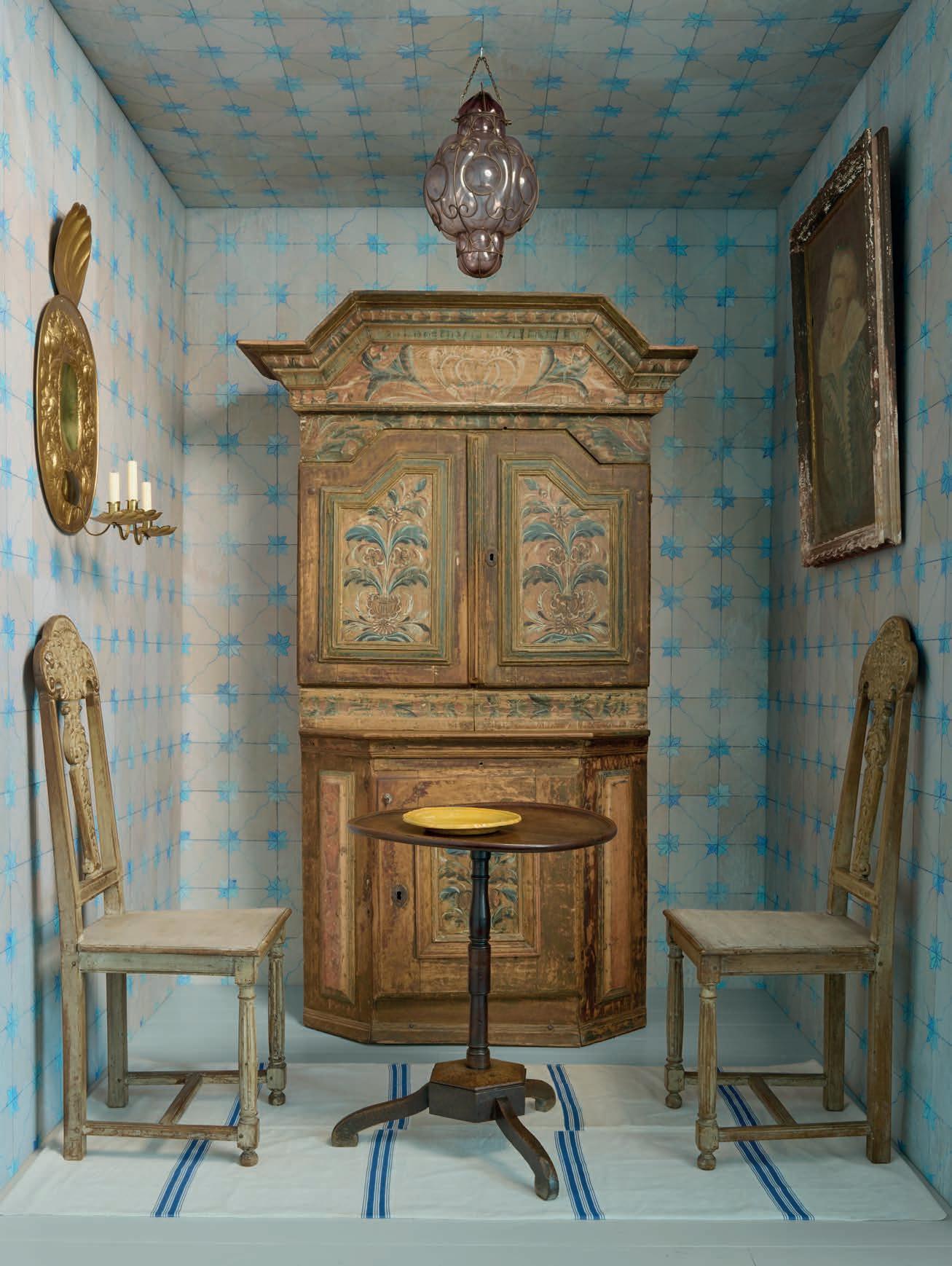


Antiques, Design and Art for Interior Decoration Book tickets at decorativefair.com or pay at door Free entry from 4pm daily | @decorativefair FAIRTHEDECORATIVE AUTUMN 2022 4 to 9 BatterseaOctoberParkLondon
DARKTHEAGE
Whether it’s post-pandemic, or just general gloom, ‘macabre’ collecting has boomed in recent years. On the eve of Halloween, Antique Collecting lifts the lid on the dark side
When the saleroom doors open on Sworders’ annual Out of the Ordinary sale there’s no saying who will come through them. Recent bidders have included an entire witches coven (after a mummified cat) and a stag (keen to purchase a vampire slaying kit). Onething they have in common is they both reflect the growing upward trend in ‘dark’ collecting.Mark Wilkinson, who has curated the sale for the past five years, said: “If there is one area what has seen real growth itiswitchcraft ” Several factors are atplay, not least the
Above A courtesyestimatefarsold17thandpertainingcollectiontotheoccultwitchcraftfromtheto20thcentury,itfor£20,000lastyear,outstrippingitslowof£4,000,imageofSotheby’s
recent rise in the occult. Partly inspired by social media, including sites such as witchtok, and the boom in TV shows, contemporary paganism is on the up.
Wilkinson continued: “We are also based in Essex which has a huge tradition of witchcraft dating back to the Matthew Hopkins the 17th-century Witch nder General responsible for putting up to 100 alleged witches to death.”
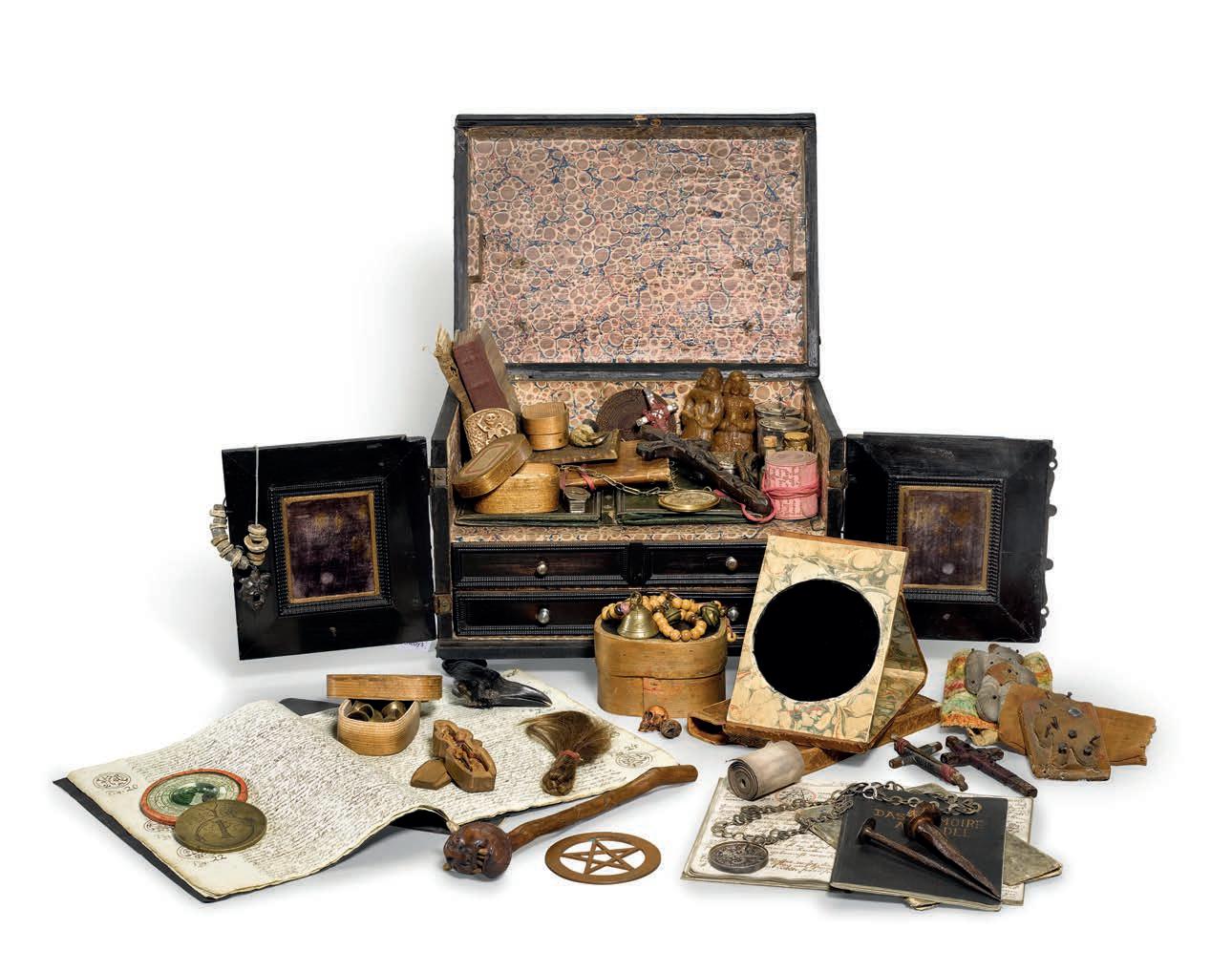
is month sees an ongoing exhibition on witchcraft in Colchester, the county town of Essex where its castle was a key landmark in the Essex witch trials. In that county alone 1,000 people were accused of witchcraft from the 1500s to 1800s, with accusations ranging from using animal familiars to kill neighbours to meeting in secret and reading from mysterious books.
Dark side
James Gooch, from the Bedfordshire-based dealer Doe and Hope, said: “Demand for the macabre may have become more ‘normal’ with the advent of social media and the acceptance of being more di erent. e idea that it is cool now, I guess, helps, but, essentially, the true collectors are not part of a fad it’s an ingrained curiosity for the darker side.”
And the true collector is prepared to pay what it takes to secure the best and most authentic pieces. Last May
16 ANTIQUE COLLECTING
COLLECTING GUIDES e Macabre
at Sotheby’s when the hammer fell on lot 170, the buyer became the owner of a casket containing, among its talismans and amulets, a preserved crow’s head, a length of plaited hair and a collection of animal teeth. Expected to make £4,000-£6,000 the wooden box, described as ‘the property of a German gentleman’, fetched £20,000.

Witch hunt
While vampire slaying kits embody the theatrical, with other areas of ‘dark’ collecting, authenticity is everything. When a court record of the trial of two Su olk witches in 1664, which had been expected to make £600-£900, went under the hammer in 2019 it sold for £5,400.
Titled A tryal of witches at the Assizes held at Bury St Edmunds on the tenth day of March, 1664. Before Sir Matthew Hale. Taken by a person then attending court it was a rst-hand account of the trial of two elderly widows Rose Cullendar and Amy Duny who faced 13 charges of the bewitching of several young children between the ages of a few months to 18 years old.
In March this year Scottish First Minister Nicola Sturgeon issued an apology to the estimated 4,000 people accused of witchcraft between the 16th and 18th centuries.
Left Memento mori skull and crossbones, Europe, 1801-1900, unknown maker. Science Museum, public domain via Wikimedia Commons

Right A WikimediaPublicburnedaccusedillustration14th-centurydepictswitchesbeingatthestake.domainviaCommons
Didknow?you
Medium Helen Duncan was the last person to be conviced of witchcraft after the incheesecloth.beturnedshe‘ectoplasm’conjuredouttoregurgitatedShereceivedasix-monthsentence1944undertheWitchcraftActof1735.
A NEW BROOM
Publishing innovations of the 16th and 17th century witnessed an explosion of printed material, sparking –aninformationormisinformation –revolution. The revolution coincided with, and helped create, what has been termed “the European witch craze”: a moral panic and collective psychosis that spread through Europe and Scandinavia.

Below A memento mori gure. image credit Wellcome Collection
Cheap print was the medium of the masses, and the crude woodcuts were the visual language of early modern England. The folkloric image of the crone was established and repeated in similar pamphlets over the next century. These witches were usually bitter old women who lived on their own and kept cats or other animals as pets.
Torture was recommended for extracting confessions, death was now the penalty, even for a “good” witch.


Above right Malleus Male carum was a bestseller and strongly in uenced the obsession with witchcraft for 200 years. Image credit Wellcome Collection, public domain via Wikimedia Commons

Below Witchcraft: witches and devils dancing in a circle, woodcut, 1720. Image credit Wellcome Collection, public domain via Wikimedia Commons

‘In 1671, ownerofferedPracticeTheAstrologicalofPhysick,ahow-toguideforpreparingabottlethatmightprotectitsfromtheforcesofwitchcraft’
ANTIQUE COLLECTING 17
Blood suckers
Belief in vampires, an undead creature said to need human blood to survive, goes back hundreds of years and persists in some parts of the world today. ey are enshrined in European folklore. e publication of John Polidori’s e Vampyre in 1819 had a major impact and that was followed by Bram Stoker’s 1897 classic Dracula.
A month after the Sotheby’s sale, a vampire-slaying
Cabinet of curiosities
Today’s interest in the macabre and downright unusual is, in part, due to the resurgence of interest in the cabinet of curiosities. First created in Renaissance Europe, these collectors’ rooms were microcosms of the universe. Also known also as wunderkammer or kunstkammer, they didn’t have to be scientifically accurate. Some contained stitched-together artefacts from diverse sources which created fantastic creatures closer to art than to nature. Most of the great museums of the world grew out of such collections. Rudolf II’s kunstkammer is at the heart of Vienna’s Kunsthistorisches Museum while Sir Hans Sloane’s collection became the nucleus of the British Museum. The 19th-century scientifically-arranged museum rang the death knell on cabinets of curiosity as “curio” became a derogatory term.


Below left Domenico Remps (1620–1699) Cabinet of Curiosities, 1690s, oil on canvas, via Wikimedia Commons
Bottom left A cabinet of curiosities, 17th century, Italy. Photo by Rau Antiques via Wikimedia Commons
Below A intoweredrinkingusedBellarminestonewarejug.Onceasa17th-centuryvessel,theyoftenconvertedawitch’sbottle

Below right Witches’ balls have been used for centuries to repel them from homes, image courtesy of Doe and Hope Macabre

kit once owned by Lord Hailey, a British peer and former administrator of British India, expected to make £2,000£3,000 at the Derbyshire auctioneers Hansons, sold for £13,000 after sparking an international bidding war.

Charles Hanson said: “Bids came in from all over the world including France, America and Canada. Objects like this fascinate collectors and this one had a particularly interesting provenance.” Items in the late 19th-century kit included a matching pair of pistols, brass powder ask, holy water, a copy of e Bible, wooden mallet, stake, brass candlesticks and rosary beads.
Evil eye
If you really wanted to ward o the evil eye there were (and are) a number of tools at your disposal from stoneware “witches’” bottles (which were lled with a bizarre assortment of iron nails, lead shot, bundles of hair, and a heart-shaped piece of felt pierced with pins) to mirrors. So-called “witches’ bottles” (their actual purpose is disputed) often crop up in urban archaeological digs.
Their contents were describedin The Astrological Practice ofPhysick, published in 1671, which offered a how-to guide for preparing a bottle toprotect its owner from witchcraft.According to the folklorist Ralph Merri eld: “ e supposed victim of witchcraft would put some of his urine in a bottle with pins or needles, and bury it, believing that this would in ict acute pain on the witch, who would be unable to pass water until the spell had been German-maderemoved.”stoneware Bellarmine jugs, used as 17th-century drinking vessels, were often used as witches bottles. eir human-like shape and featuring a frightening face were seen as good ways to repel witches. It was commonly believed that a witch bottle could capture an evil spirit which would be impaled by the nails and pins and drowned by the urine. Another theory is that the bulbous shape of the Bellarmine jug represented the witch’s bladder.
Cat’s tale
As stories of witchcraft raged from the 16th to 18th centuries so too did ways to combat its malevolence. ousands of concealed objects have been found in homes around the country, the result of rituals conducted by people known as “cunning-folk”, to foil witches.
Some remedies were simple: horseshoes placed
18 ANTIQUE COLLECTING
COLLECTING GUIDES e
above doors, and iron thought to repel witches. e chimney was for centuries believed to be a gateway for bad spirits and therefore one of the greatest threats to the home.
It became common custom in Britain to place the dried or desiccated body of a cat inside the walls of a newlybuilt home to ward o witches, evil or as a good luck charm. Although some accounts claim the cats were walled-in alive, examination of recovered specimens indicates post-mortem concealment in most cases.

Mirror mirror
Equally e ective in the battle against evil are sorcerers’ mirrors, witches’ balls and scrying mirrors. e former were commonly hung in the home, where the distorted image would ward o evil spirits. e use of a scrying mirror – some of which are entirely black – is somewhat di erent. ey were more likely used for divination, with the word “scrying” meaning “to make out dimly” in Old English. Scrying involved gazing into the surface to see images or visions, a practice popular among early 20th-century English witches. Earlier this year a Victorian scrying mirror smashed its low pre-sale estimate of £200 to sell for £2,4000 at Sworders.
e most famous owner of a scrying mirror was the alchemist Dr John Dee, advisor to Queen Elizabeth I, who used a black obsidian mirror and a crystal ball to see visions of the future. e scrying mirror is today on display in the British Museum.

Decorative appeal

As well as being popular among dedicated collectors of the macabre, unusual pieces are highly sought after by interior designers as coversation-provoking one-o s.
Wilkinson continued: “30 years ago if you decorated a room it would have been purely in the Regency or, say, art deco style. Now there is a total mix of design styles. Added to which, collecting tastes are becoming ‘darker’. e very wealthy are attracted to these type of sales. Let’s face it, if you have everything, why wouldn’t you want a fake mermaid in your bathroom?”
While the public’s interest in taxidermy peaked ve years ago, today only the best pieces appeal to collectors. Doe and Hope’s James Gooch, who collects Jack the
Right e Museum of Witchcraft and Magic in Boscastle, image Shutterstock
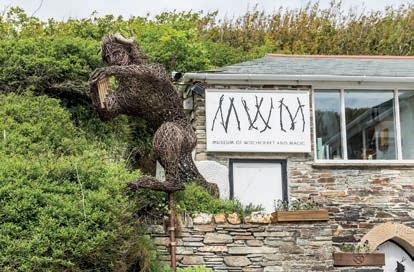
Below A 19th-centuryrare Victorian scrying mirror, 25cm (10in) in diameter, which smashed its pre-sale estimate of £200-£300 to make £2,400 in February, image courtesy of Sworders
Below left A mummi ed cat, 17th century, believed to have been removed from a replace, sold for £350, in 2018, almost double its low estimate of £200
DISCOVER MORE
The Museum of Witchcraft and Magic in the Cornish village of Boscastle houses one of the largest collections of folk magic, ceremonial magic, Freemasonry and Wicca in the world.
Initially known as the Folklore Centre of Superstition and Witchcraft, it was founded on the Isle of Man by the English folk magician and collector Cecil Williamson in 1951. In 1954, he opened the Museum of Witchcraft, firstly in Windsor, then Bourton-on-the-Water in Gloucestershire before moving to Boscastle in 1960. In 2013, ownership was transferred to Simon Costin an art director, set designer and curator. A momento mori necklace designed by Costin is in the Metropolitan Museum of Art in New York.
Ripper-related items and pieces connected to lunatic asylums, said: “You can add these pieces to any interior in my opinion. Life is all about balance and this applies to the amount of macabre you can add to a room without it tipping over into a goth interior.”
Wilkinson continued: “Sorcerors’ mirrors might not be used for divination today but imagine how great they would look as a group on a wall.”
Wicked Spirits? Witchcraft + Magic, produced in partnership with the Museum of Witchcraft and Magic in Boscastle, continues at Colchester Castle until January. Sworders’ annual Out of the Ordinary sale takes place every February.
Below A Victorian hoax “Feejee” mermaid, a novelty taxidermy specimen (half monkey, half sh), which had been expected to make £1,000-£1,500 sold for £4,700 at Sworders in 2018

Above A courtesyitestimatethansorceror’s19th-centurymirrormoredoubleditslowthisyearwhenfetched£3,400,imageofSworders
ANTIQUE COLLECTING 19
“I started with pebbles on the beach and then toy cars. But, unlike most people, when puberty hit I just carried on collecting things that sang to me. Some of the first serious things I bought were three 19th-century dissected human foetuses. I just saw them and fell in love. For me collecting is a psychological condition. I can’t stop myself.
“My museum is full, my house is full, my studio is full, my barn is full. When I see something I like in a museum or a private collection, or read about it in a book, I add it to my mental shopping list and know I will probably find it one day – or forget about it.
“The museum is my attempt to recreate a cabinet of curiosities for the 21st century. I try to ignore the Enlightenment and create a museum similar to that of the Danish physician and polymath Ole Worm (1588-1654). Worm’s home museum was divided into four with humans classified in the ‘animals’ section, together with ‘divine monstrosities’, including deformed foetuses.
“I also admire the collectors of the past including the Tradescants, John the Elder and John the Younger, whose collection was inherited by their friend Elias Ashmole in 1652 and later formed the Ashmoleon Museum in Oxford. My greatest hero though is PT Barnum whose American Museum combined art gallery, taxidermy, aquarium, and menagerie. His memoirs are extraordinary.

“My museum is so filled with things I’ve found
Right ofpieces,AnatomicalimagecourtesyDoeandHope

Below right A cabinet dedicated to dead people at the Museum of Curiosities

people are naturally drawn to it, be it conchology, entomology, magic, surrealism, ethnology, penises, taxidermy, crabs or books.
“I want to put the whole world in my museum, so if it’s not there – I probably want it. At the moment I’m most interested in traditional magic and folk medicine.”
Viktor Wynd’s Museum of Curiosities, Fine Art and Unnatural History is open five days a week at 11 Mare Street, Hackney, London. He is the author of The Unnatural History Museum and currently has an exhibition at the National Maritime Museum in Falmouth, with an accompanying fully-illustrated catalogue, The Infected Museum
THE COLLECTORMACABREIN HIS OWN VIKTORWORDSWYND IS THE CURATOR OF THE MUSEUM OF CURIOSITIES
Left Viktor Wynd, curator of the Museum of Curiosities
‘“The museum is my attempt to recreate a cabinet of curiosities for the 21st century. I try to ignore the Enlightenment and create a museum similar to that of the Danish polymath Ole Worm (1588-1654) whose home museum was divided into four, including divine monstrostites”’
20 ANTIQUE COLLECTING COLLECTING GUIDES e Macabre

M MModer r n nn A AAr r t t & D D e ee e s ss s i ii i g ggn n
Waxing lyrical
Chippendale period
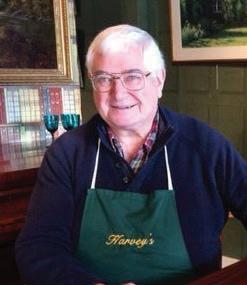

A couple of years ago I was invited by clients to view a number of items they wanted to dispose of as they were moving house. Among them was a superb Chippendale period mahogany four-poster bed. e hangings were

It is with a heavy heart I write these words in a week none of us will ever forget. Everyone who had the good fortune to meet Her Majesty Queen Elizabeth II will have the fondest memories of her. I happily recall when my late partner Chrissie and I attended a garden party at Buckingham Palace. Her radiant smile was captivating and warmed all those in close attendance. I am also reminded of the day when Chrissie, in her role as Mayor of Witney, played host to Charles, then Prince of Wales, during an o cial visit.
We are witnessing the move from the second Elizabethan age to the third Carolean era. As we wait to see what her great reign will be remembered for, we continue to take comfort from the treasures of the past and the marvellous furniture which has survived the ravages of time.
In the picture above we see a William and Mary period marquetry chest on stand alongside a George II tripod table, with a George III four-poster bed and dressing cabinet. While the styles may di er they do not look out of place together.
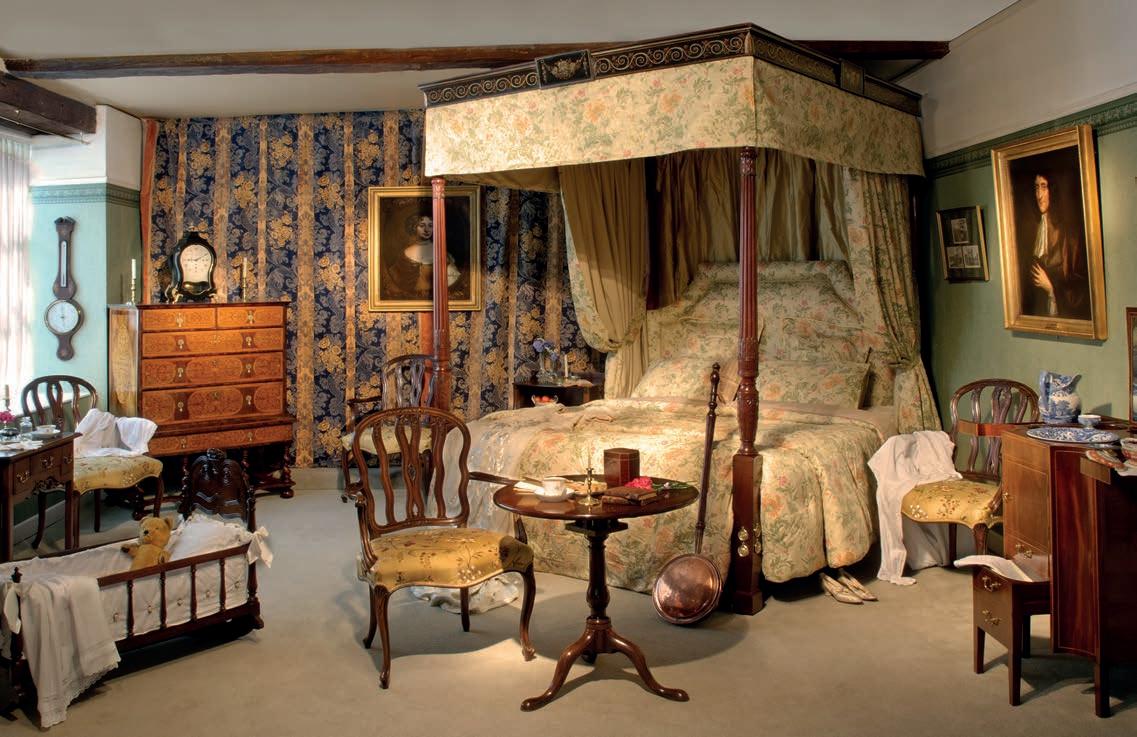
Above A William and Mary period marquetry chest on stand with a George II tripod table and George III fourposter bed
Right e Chippendale period mahogany fourposter bed
David Harvey introduces us to three antique beds that are simply a dream
22 ANTIQUE COLLECTING EXPERT COMMENT David Harvey
more recent and, in this age of central heating, were more for decorative use than insulation. is particular bed, dating from the 1760s, was in excellent condition. e owners insisted on keeping the original box and mattress as they found them very comfortable over the years.
Fine detail
As is so often the case, it is the details on a piece that help us to date it and attribute a particular designer or inspiration. e bed posts in question leave us in no doubt about its origins. e design is shown in plate XXXVIII from the third edition of e Gentleman DirectorCabinet-Maker’s&published by Chippendaleomas in
Above e design is shown in plate XXXVIII from the third edition of e Gentleman & Cabinet-Maker’s Director
Far left Carved detail on the foot of the bed post Left e top of the bed post is equally well decorated


Right e bed has an arched and decorated canopy
‘Not all of Chippendale’s patrons were aristocracy or gentry. They also included the celebrated actor and theatre manager, David Garrick, who ordered a four-poster bed from the cabinetmaker for his Surrey villa. Nor did Chippendale limit himself to the grander rooms. Surviving invoices from Nostell Priory, in West Yorkshire, record he supplied Sir Rowland Winn a four-post servant’s bed for the cook’s room at a cost of £1.10 shillings in 1767’
1762, where he wrote: ‘A Design of a Bed with carved Cornices, which may be gilt, or covered with the same Stu as the Curtains’. He then goes on to describe the dimensions and further details.

Not all of Chippendale’s patrons were aristocracy or gentry. ey also included the celebrated actor and theatre manager, David Garrick, who ordered a fourposter bed from Chippendale for his Surrey villa. Nor did Chippendale limit himself to the grander rooms. Surviving invoices from Nostell Priory, in West Yorkshire, record how he supplied Sir Rowland Winn with a fourposter servant’s bed for the cook’s room at a cost of £1.10 shillings in 1767.
Romantic setting
Assembling a four-poster bed is far from an easy job. It involves numerous parts, bolt and hangings but the task does allow one to ponder the generations of people who slept and loved in them.

e four-poster (below) has an arched and decorated canopy. Just imagine retiring to bed while an open re warms the room. e original purpose of the hangings was to provide a draft-free and uninterrupted night for the occupants – and they seem to have achieved their purpose. Such a four-poster bed is surely the very epitome of romantic living.
David Harvey is the owner of Witney-based W R Harvey & Co. (Antiques) Ltd. For more details go to the website www.wrharvey.com
ANTIQUE COLLECTING 23
WEST meets EAST

An exhibition opening this month reveals how a small West Sussex village was at the heart of the creative powerhouse
If Bernard Leach (1887-1979) was the father of British Studio pottery, then his friend and mentor Shoji Hamada (1894-1978) was its venerated uncle. roughout their 60-year friendship, during which time the pair founded e Leach Pottery in St Ives in 1920, they devised a creative philosophy which would in uence craftspeople in both the East and West for generations.

As the in uence of the arts and crafts movement was starting to wane, both men wanted to revive the dying folk arts of both England and Japan that were gradually being eroded by the industrialising forces of the 20th century.
Top Shoji Hamada (18941978), charger, decorated in light and dark brown trailed and brushed slip. Image courtesy of e Potteries Museum & Art Gallery, Stoke-on-Trent
Above Shoji Hamada (1894-1978) at his wheel. By kind permission of the Hamada Estate
Right Bernard Leach (1887-1979) large wide rimmed dish, greygreen and brown, 1930s, stoneware, celadon glaze brushed with iron. Image kindly provided by the Crafts Centre,StudyUniversity for the Creative Arts

Village people
Central to their philosophy was a visit to the tiny English village of Ditchling in the South Downs, which, like St Ives, was a bohemian community of artists and designers experimenting with communal life, craftmanship and self-su ciency. Known as the Guild of St Joseph and St Dominic, the community was founded in 1913 by Eric Gill, the internationally-renowned, though controversial, sculptor, artist and typographer whose works ranged from the sculptures of Prospero and Ariel at Broadcasting House in London to the Gill Sans printing typeface.
When Hamada visited the lay community in 1920 he was captivated by the philosophy of the artists and apprentices at work and one woman in particular – the pioneering weaver and natural dyer, Ethel Mairet.
In later years, Hamada would embody Ditchling’s spirit in the Japanese craft movement known as Mingei. Ditchling Museum of Art + Craft’s curator Stephanie Fuller, said: “Hamada forged such a strong relationship with Mairet, who he visited several times in the 1920s, he exhibited her work in Tokyo and bought large quantities of fabric from her and fellow weaver Valentine Kilbride, to sell in Japan.” In fact so entranced was he by her work he had a number of suits made from tweed produced in Ditchling, one of which he wore when he got married rather than traditional Japanese clothing.
Early days
Hamada and Leach’s story was one of cross-cultural exchange from the start. Leach was born in Hong Kong in 1887, the son of English parents, and spent his early years in Japan and Singapore. Later sent to England for schooling, he studied at the Slade School of Art under Henry Tonks and Frank Brangwyn and when he returned to Japan in 1909 it was to study etching.
But it was around this time he discovered raku (a lowred earthenware), a ring process which so amazed him he wrote: “I was carried away to a new world. Enthralled, I was on the spot seized with the desire to take up the craft”.


Leach became famously the rst Western potter to be trained in the Oriental tradition, having studied under the potter Ogata Kenzan VI, a descendent of one of Japan’s most famous potters who later inherited the title of the seventh Kenzan.
In 1916, he was invited to set up a pottery in Abiko which is where, three years later, he met the 25-yearold Hamada. At the time, Hamada, who was working at
e Japanese potter Shoji Hamada and Bernard Leach were arguably the most in uential ceramicists of the 20th century.
24 ANTIQUE COLLECTING
THE EXPERT COLLECTOR 20th-century ceramics
that Hamada discovered the work of the English potter in Japan while Leach learned of the English slipware tradition reading Charles Lomax’s 1909 book Quaint Old English Pottery while living in Japan.)

Hamada had started his artistic education at the Tokyo School of Fine Art, studying wood work and, later, painting but went into ceramics because, as he subsequently wrote: “a pot will always be useful, even if it’s not a good pot.”
Having met at the Mikasa Gallery, Tokyo, the pair became friends and started a rapid exchange of crosscultural ideas sparking a friendship that would last a lifetime. Potter and author Edmund De Waal described Leach as “a kind of link or courier between English and Japanese potters in the interchange between our preindustrial tradition and theirs.”
Mutual bene t
In 1920, Hamada left his job in Kyoto to set o to England with Leach who, by then, he considered one of his “grand champions of pottery.”
In the UK in the 1920s, Japanese and Chinese pottery was viewed as the pinnacle of ceramic achievement, especially stoneware made during the Chinese Song dynasty (960–1279), which had become popular with European collectors. It was seen as a gold standard by which modern ceramics could be compared.
Hamada’s work was in uenced by a wide variety of folk ceramics including English medieval pottery, Okinawan stoneware, and Korean pottery. His detailed study of glazes in Kyoto was considered to be of great value to Leach, who had not been educated in these techniques.

Shoji Stoke-on-TrentMuseumcourtesytransparentc.1920-1923,withearthenware(1894-1978),Hamadabottlefourlughandles,engobeandglaze.ImageofePotteries&ArtGallery,
Above right Ethel Mairet (1872-1952) spinning at the workshop at her home of Gospels, Ditchling, Sussex. Image kindly provided by the Crafts Study Centre, University for the Creative Arts

Right Two hand-woven textile samples, made from vegetable-dyedhand-spun,wool, by Ethel Mairet, 1920-1925. Image kindly provided by the Crafts Study Centre, University for the Creative Arts

Below e postcard was signed by Shoji Hamada and M. Yanagi. Image kindly provided by the Crafts Study Centre, University for the Creative Arts
Below right Postcard sent to Ethel Mairet from Shoji Hamada, Hamada Pottery, dated March 12, 1922. Also signed by M. Yanagi and others. Image kindly provided by the Crafts Study Centre, University for the Creative Arts


Ethel Mairet
One the artists who captivated Leach and Hamada in Ditchling was the weaver and natural dyer Ethel Mairet (1872- 1952). Mairet was born in Devon but her marriage in 1902 to the historian and philosopher Coomaraswamyseparatingtraditions.country’sfascinatedwheretookCoomaraswamyAnandahertoSriLanka,shebecamebythecraftAfterfromin1910,
by 1913 she had married Philip Mairet and was firmly focused on weaving and the research into vegetable dyes that culminated in the publication of her book A Book on Vegetable Dyes in 1916.
Printed by the poet Hilary Pepler, a friend from Ditchling, the book proposed alternatives to the chemical dyes that Mairet considered to be ugly, crude, and insipid. Instead she used acorns, elderberries , gorse bark, lichen, iris root, and other naturalMairet’singredients.students at her Ditchling home of Gospels were drawn from the local community and included Petra Gill, Eric Gill’s daughter, as well as Peter Collingwood and Marianne Scrub.
‘Both men wanted to revive the dying folk arts of both England and Japan that were gradually being eroded by the industrialising forces of the 20th century. They felt it was their duty to revive these crafts before they were lost to the course of history’
ANTIQUE
St Ives
ey settled in St Ives in Cornwall, a small artistic community, where they set up a business. Leach purchased a small strip of land where they introduced Japanese kiln designs (built by the potter Tsurunoske Matsubayashi) to the UK and the West with a wood- red climbing kiln (noborigama) and a raku kiln. Both pursued their ideal of creating “genuine handicraft of quality” on a smallInscale.1923,
Hamada returned to Japan as he was concerned about his family following the disaster of the Kanto earthquake. Leach held raku parties on ursdays and his rst wife Muriel served Cornish teas for 1 shilling. e in uence of the East is also evident in other ways, from the use of the simple shapes inspired by the Japanese tea ceremony, the yunomis (Oriental teabowls), saki bottles, teapots and asks, to his interpretation of the glazes from the Sung dynasty (oatmeal, tenmoku, celadon). His repeated use of ‘graphic’ images such as the willow, the pagoda and the mountain range, created through simple brush strokes, is also straight from Japanese culture. But it was Hamada who rst broke into the art world in May 1923 with a solo exhibition at the Paterson Gallery in London.
Hamada’s legacy
In 1924, back in Japan, Hamada moved to Mashiko near Tokyo which had a ceramics tradition stretching back to the Edo period. During his time there he developed an internationally-signi cant centre for studio pottery that today plays host to over 600 potters.
At Mashiko he developed the ideology of Ditchling and e Leach Pottery, becoming one of the leading proponents with the art crtic and philosopher Yanagi Soetsu (1889-1961) of Mingei (folk craft).
Works had to ful l six criteria: it should be made by anonymous crafts people; produced by hand in quantity; inexpensive; used by the masses; functional in daily life and representative of the region in which it was produced.
In e Unknown Crafstman Yanagi wrote: “Bringing cheap and useful goods to the average household, industrialism has been a service to mankind, but at the cost of the heart, of warmth, friendliness and beauty. By contrast, articles well made by hand, though expensive, can be used in homes for generations, and thus considered, not expensive after all.”
Above Bernard Leach and Hamada with the Leach Pottery sta , 1960s. Image kindly provided by the Crafts Study Centre, University for the Creative Arts

Below left Kiln plan, 1920s, design by Matsubayashi,Tsurunoske for the Leach Pottery, St. Ives. Image kindly provided by the Crafts Study Centre, University for the Creative Arts

Below right forStudyprovided1930s.Pleydell-Bouverie,Katherinecup,ImagekindlybytheCraftsCentre,UniversitytheCreativeArts
Opposite page top right Shoji Maak2019.soldPottery(1894-1978)HamadaearlyLeachjarandcover,for£7,200inMayImagecourtestof
Opposite page bottom right Hamada Potter by Bernard Leach, rst edition, published by courtesyInternational.KodanshaImageofMaak ceramics
Mashiko-yaki pottery is distinguished by its use of local clay and glazes to create a simple, soft and thick style of pottery using dark brushstrokes, representing decorative elements of owers and leaves. Hamada’s work, in particular, combined the earthy tones of Mashiko clay with striking dripped glazes applied by ladle and brush.

As well as re ecting Ditchling’s ethos, Hamada’s move to a rural location was in uenced by his visits to the village. Hamada later wrote about his time in the South Downs: “People there were not just escaping to the country; they had one leg in the city and went there anytime they wanted.”
Shoji Hamada: A Japanese Potter in Ditchling, runs at the Ditchling Museum of Art + Craft from October 22. It features 70 ceramics, including 25 pieces by Hamada. For more details go to www.ditchlingmuseumartcraft.org.uk
Leach’s legacy
Back in Cornwall, Leach trained a new generation of artists. Michael Cardew (1901-1983) became the first student at The Leach Pottery in 1923 before setting up the Winchcombe Pottery in Gloucestershire in 1926, where he concentrated on affordable, slip-decorated earthenware. Norah Braden (1901-2001) joined the pottery in 1923 with Leach describing her as one of his most gifted pupils. In 1928, she joined Katharine PleydellBouverie (18951985) at her pottery in Coleshill, where she carried out extensive glaze experiments using ash glazes made from plants and wood.
26 ANTIQUE COLLECTING
THE EXPERT COLLECTOR 20th-century
Q What were the prevailing ceramic trends in the 1920s?
AIn the early 1900s, Orientalism had grasped the taste of many collectors with designers and artists, such as William de Morgan and the Omega Workshops, creating ceramics which had absorbed Eastern influences. Previously, Orientalism and been more of an academic exercise in historicism (with Western potters looking to recreate the glazes of the East). But Leach was looking to fuse the best elements of the two cultures on a more philosophical level. The objective was to produce simple utilitarian wares valued for their craftsmanship with a return to traditional styles and techniques informed by Japanese crafts and heritage and blending these with the traditional techniques of English medieval country pottery.
Q What techniques did Leach learn from Hamada and vice versa?
ALeach had first been introduced to ceramics in 1911 and trained for two years under Ogata Kenzan VI, alongside his friend Tomimoto Kenkichi. However when he arrived in St Ives he relied heavily on the technical abilities of Hamada. They built the Leach Pottery together from scratch, constructing an Eastern-style three-chambered kiln (the first in Europe). However Leach’s lack of technical skill was compensated by his artistic ability. Their working relationship was very much a partnership of exploration with them seeking to rediscover ‘lost’ techniques of 17th-century pottery.
Q How influential were the pair in the 1920s? – which of them received the biggest plaudits?
AThere was no rivalry between Leach and Hamada, it was a partnership. While early contemporary accounts refer to Hamada as “Mr Leach’s assistant” this was not a true reflection of their relationship. It was in fact Hamada rather than Leach who was the first of the two to be given his first solo exhibition, which was both a critical and commercial success, introducing Hamada and, in turn, Leach to established collectors such as


George Eumorfopoulos. Hamada’s second exhibition just six months later led to the first review of a studio pottery exhibition in The Times
The 1920s were more of a mixed decade for Leach, when he exhibited it was generally at the smaller galleries and critical response was more muted. He achieved greater critical success in Japan and would often send his best works to be sold there.
QWhat makes an ‘ideal’ Hamada piece?

AIt is so dependent on the collector and what you are drawn to as both men had highlight pieces throughout their careers. For example, one of my favourite pieces by Hamada Shoji is an early raku jar and cover that was produced in St Ives around 1922. It is decorated in a Chinese ‘Sancai’ style with running vivid glazes over an incised cream slip. It is a fantastic piece that shows both cultures colliding.

Q Which potter currently has the biggest ‘clout’?

AFashion always plays a part with collecting and they have both had fluctuations within the market, however as two ‘fathers’ of studio pottery and given the importance of their work, there is always a Whendemand.notwoworks are the same, or can even draw direct comparisons, a likefor-like comparison is never possible. As ever, determining desirability comes down to the individual work and any associated provenance.
Q Both men promoted utilitarian ware. Did they make pieces aimed at collectors?
A There was always a dichotomy within Leach’s philosophy and his practice. On the one hand his ambition was to realise the Mingei philosophy that true art and beauty could be found in modest, useful wares made by the ‘unconscious’ craftsman. On the other hand he was making finer exhibition pieces for sale in Mayfair galleries. All his works were signed with the SI seal of the Leach Pottery, usually impressed. All his personal works were signed with his BL initials, either impressed, incised or painted.
Hamada embodied the Mingei philosophy more closely. In St Ives he used an impressed mark in Japanese character alongside the Leach Pottery seal for his personal works, on his return to Japan he ceased marking his work, wishing the character of his work to speak for itself. However, in the true Japanese tradition his works were accompanied by a wooden
box that is inscribed and bears the personal seal of Hamada. The presence of the original signed wooden box with his work is an important part of the provenance and completion of the piece.
Maak’s next sale Pioneer Potters, Modern and Contemporary Ceramics is from November 14-17. For more details go to www.maaklondon.com
We ceramics
‘It was in fact Hamada, rather than Leach, who was the first of the two to be given his first solo exhibition which was both a critical and commercial success’
ANTIQUE COLLECTING 27
asked
expert Marijke collectingandceramicsfounderVarrall-Jones,ofMaak,aauctionhouseconsultancy,forhertips
Q&A

A 33.66 carat brilliant-cut diamond ring with yellow and white gold sold for $378,000 (£323,000), against an estimate of $250,000-$350,000 (£213,000-£300,000) at Christie’s New York sale which ended on August
With the nation marking the death of Queen Elizabeth II, we put mourning jewellery in the spotlight. Plus we reveal a lesserknown but eminently collectable English watchmaker IN THE Loupe

ANTIQUE COLLECTING 29 JEWELLERY | WATCHES | MAKERS | DESIGNS | COLLECTING
online
18
Mourning Time
In the 16th century life looked very di erent from today. Death stalked at every turn – untreatable diseases and infant mortality was high and life expectancy low. It is no wonder that the concept of memento mori (remember you must die) became an important aspect in literature and art. e phrase Vanitas vanitatum, et omnia vanitas (vanity of vanities, all is vanity) re ected the fact earthly life is ultimately empty. Vanitas paintings of the period depicted skulls, rotting fruit, melting candles and clocks as symbols of the transience of life. e concept was also re ected in momento mori jewellery, the precursor to the mourning jewellery of the 18th and 19th jewellery, which sought to remember a loved one, momento mori jewellery (like vanitas paintings) incorporated imagery of skulls, co ns and skeletons alongside philosophical mottoes composed in Latin, French or English intended to be seen only by the intended recipient or wearer.

As we grieve the death of Queen Elizabeth II, we remember how previous generations mourned the passing of both their monarchs and loved ones
30 ANTIQUE COLLECTING
Butcenturies.unlikemourning
IN THE Loupe Didknow?you The Latin ‘mementophrasemori’translatesas‘rememberyoumustdie’ Main Skeleton in co n pendant, London.Credit:Museum,1701-1900,Europe,byScienceLondon.ScienceMuseum,PublicDomain
Virtuous life
e concept of memento mori was based on the Christian tradition of using death as a reminder to be virtuous in life, re ecting on both the eeting nature of life compared to the eternal nature of death. When it came to jewellery it was a constant reminder to live virtuously now (and go to heaven), rather than burn eternally in hell.
Elizabeth Doyle of Doyle & Doyle, New York, said: “In the highly religious society of the time, it was important to live piously so that you could enjoy the afterlife. Ironically, most people who seek out momento mori jewellery today interpret this to mean live life to its fullest and enjoy today because you never know when your time will come.”
Auctioneer Charles Hanson re ected on another important use. He said: “In an age where the Church and the monarch desired complete authority, memento mori jewellery helped to cement the power of both among a largely illiterate population.”

But as time went on, memento mori jewellery became as much a statement about personal identity and selfre ection as it was a reminder of death. e wealthy and elite led the fashion, with symbolism the core principle used to re ect social and cultural values.
Baroque in uences began to permeate jewellery design during the 1680s. While the skeleton symbolism remained popular, shapes became more rectangular. e imagery of entwining acanthus owers became more common, with designs also in uenced by the architecture of the period.
Death of a king
e execution of Charles I in 1649 prompted the emergence of memorial jewellery, with loyal Royalist supporters wearing jewellery set with a secret inscription or image to mourn their dead king. e carved rock crystal
Above Momento mori and mourning jewellery has fascinated for centuries, image courtesy of Tennants
Right omas Richard Williams (18241871). thestereographDaguerreotypeevokingtemporarynature of
life and the inevitability of death. It includes a human skull, an hourglass with the sand running out and an abandoned book, image courtesy of the Wellcome Institute. Public Domain

Below A pair of silver and gold Stuart crystal cu inks, c.1700, with octagonal faceted rock crystal covers, over a monogram believed to be that of the Earls of Bose-Lyon, sold for £1,700 against an estimate of £200-£300 at Sworders’ ne jewellery sale on June 28. Also pictured are Stuart crystal rings, slide, pendant and earrings from the early 18th century

stones were mounted over ciphers made of gold wire, displayed upon a background of hair work, and set in simple gold rings to show support for the monarchy.
Called Stuart crystals, some pre-date the 1700s, but it was from these roots that the popularity of the 18thcentury memorial ring began to grow. With the reign of Charles II came a greater freedom for self-expression and religious tolerance, challenging traditional thought.
Seismic events such as the Great Plague in 1665 and the Great Fire of London in 1666 left a lasting impression on society and promoted the widespread wearing of mourning jewellery.
By the 1740s the Stuart crystal ring had evolved into the Georgian mourning ring: a smaller crystal or gemstone-set bezel with a reeded back. e more important the loved one was thought to be the greater the number of diamonds set in the ring’s shoulders. Some rings had engraved and enamelled skeletons stretching around the exterior of the band, with the birth and death dates of the deceased engraved on an enamel and gold scrolled shank.
‘By the 1740s the Stuart crystal ring had evolved into the Georgian mourning ring, a smaller crystal or gemstone-set bezel with a reeded back. The more important the loved one was thought to be the greater the number of diamonds set in the ring’s shoulders’
ANTIQUE COLLECTING 31
Momento mori jewellery
Left An 18-carat gold enamel memorial ring, for Lord Byron, the inner band engraved Died 19 April 1824 Aged 36, it sold for £9,200 against an estimate of £3,000-£5,000, image courtesy of Tennants



Georgian mourning
In an era without photographs or any modern-day way to remember a loved one, unlike memento mori pieces, mourning jewellery was clearly designed and intended to keep a lost love in mind, commemorating family members and friends who had sadly died. e only areas that the two had in common was that they were both generally made of gold and enamelled in black.
Tennants jewellery specialist Jessica Fall said: “Decorated with symbols of death, such as a skeleton, a co n, a reaper, or undertaker’s tools, mourning rings exhorted their owner to live life to the fullest while they still could. Interestingly, it was often the deceased who paid for the rings, speci cally leaving money in their wills for family and friends to buy rings. Indeed, Shakespeare left a large sum for friends to buy gold rings in his memory.”Bythe mid 18th century, mourning rings were all the rage among well-to-do families who would allocate money in their wills to provide a lasting souvenir of their life. Samuel Pepys left 123 rings on his death in 1703. Robert Walpole, Earl of Orford, died in 1745 and left 72 rings at a cost of £1 each. In 2018, a rare memorial ring made for the Romantic poet Lord Byron (1788-1824) sold for £9,200. Only two other known examples of Lord Byron Loupe
Above right Death and the lady. e king of terrors: or, messenger of mortality, 1760, woodcut, with watercolour, image courtesy of the Wellcome Institute

Below A inscriptioncrossbonesdepictedring,enamelledblackmourningdated1722,askullandwiththe
E.Taylor. OBT. 9.Mar 1722 AETA 80. It sold for £1,500 at Hansons in 2021, against an estimate £400-£600
memorial rings of this type are known to exist, all of which were made by Charles Rawlings of London. containedsoldotherYorkCollectionheldOnefamilyassociatedthataccountsContemporarysuggesttheseringswerewithByron’sandclosefriends.oftheotherringsisinthePforzheimerintheNewPublicLibrary;thering,whichwasatauctionin2013,alockofByron’s
hair.
Because many were kept as souvenirs and not worn, they were passed through families, meaning they can today be found on the market in pristine condition.
In terms of style, the Baroque in uence gave way to Rococo designs in the 1730s, seeing a taste for ribbon and
Left A depictingpaintedringmourningofsepiaivoryinalozengeform,amaidenatanurnbelowaweepingwillow,inscribed Joseph Walker OB 23 Dec 1782 AE 59, sold for £420, against an estimate of £300-£400, image courtesy of Tennants
32 ANTIQUE COLLECTING
IN THE
Victorian jewellery
In comparison to previous examples, Victorian mourning
pieces.
It was also common for pieces to include a lock of the deceased’s hair, often in a compartment at the back. Black was the colour of “deep mourning” with jet being the most popular material used, along with vulcanite and gutta percha.
Jessica Fall said: “Firmly established by the Victorian era, mourning rings and other pieces of memorial jewellery were enormously influenced by the deep mourning of Prince Albert by Queen Victoria in the wake of his death in 1861. The pair had shared a love of jewellery and frequently commissioning pieces together. Victoria continued the tradition, favouring pieces made in memory of Albert and other lost loved ones.”scroll motifs, gold wirework and oral elements.
By the mid-18th century the famous skull and crossbone motif had allbut disappeared to be replaced with neo-classical images of a grieving widow beneath a weeping willow or beside a tomb, onto which the deceased’s initials were carvedand their details engraved into the reverse of the ring head.

Hair today
By the end ofthe century mourning rings were produced on alarge scale, with jewellers keeping a selection in stock ready to be personalised with initials and dates. Hair, a tangible linkwith the deceased, began to be incorporated, with steamed and plaited strands stu ed into tubes of open metalwork and shaped into bow pins, watch chains, and necklaces.
As fashions changed e s e e e s ed s e de Queen Victoria it e to appear outdated d s ess d ess.
Above An early Victorian mourning brooch e es Wilson 55

Above right Fine polychrome mourning brooch with garlands and love birds
Right A collection of 19th-century and early 20th-century mourning rings and a locket on chain, has an estimate of £2,000-£4,000 at Tennants’ sale on September 19
‘By the mid-18th century the famous skull and crossbone motif had all but disappeared to be replaced with neo-classical images of a grieving widow beneath a weeping willow tree or beside a tomb onto which the deceased’s initials were carved and their details engraved into the reverse of the ring head’

ANTIQUE COLLECTING 33
commonwereoftenorholdingfaith)symbolisedanchorsincludingwithmuchsymbolismmacabre.thatincorporatedjewellerymotifswerelessVictorianwasmoresubtlecommonmotifscrosses,(whichsteadfastandahandayewbranchflower.Pearls,whichsymbolisedtears,amongthemostaccentsinmourning
Momento mori jewellery
On the eve of the sale of three watches by George Daniels, widely considered the greatest watchmaker in living history Antique Collecting considers an out-of-favour English brand fast making a comeback e time has come
With many of the recent industry headlines going to next month’s Geneva sale of three watches by the Londonborn maker George Daniels (1926-2011), it seemed a tting time to consider one of the relative unknowns of the British watch industry.

Defunct from the 1970s, the name of Smith & Son may be unknown to many, but the former Cotswolds-based maker is fast returning to watch lovers’ consciousness – and wrists. For good reason.
If you think Edmund Hillary only wore a Rolex on his ascent of Everest, think again – he also wore a watch by Smiths – now in the Science Museum. Indeed Smiths watches are so undervalued, GQ magazine recently dubbed them “best-value vintage timepieces of them all”.
Ewbank’s watch specialist, Nick Orringe, said: “Vintage Smiths are more than a nod to British manufacturing. ey are great value and relatively plentiful, allowing you to build a vintage watch collection on a reasonable budget.
Below A Smiths Astral National 1, Astral 15 and Deluxe 15 sold for £180 against an estimate of £60-£80 in 2020, image courtesy of Wilson 55
e background
S. Smith & Son, London, pocket chronometer with one minute tourbillon, sold for $35,000 against an estimate of $3,000-$5,000 in 2021 in New York, image courtesy of Christie’s

Samuel Smith & Son has a long and interesting history. First established by Samuel Smith in 1851, it soon became one of London’s premier clock and pocket watch retailers. By the turn of the 20th century, it was the most prominent London maker of complicated watches responsible for a small series of tourbillon watches with a movement supplied by the Swiss maker Nicole Nielsen and responsible for some of the nest, and most complicated, English watches ever made.
Automobile industry
After WWI Smith Sons took on the Coventry-based rm of H Williamson Ltd, then trading as ‘English Clock and Watch manufacturers Ltd.’. But with the development of the car industry, and aircraft instrumentation, the company opened a new division speci cally geared
IN THE Loupe 34 ANTIQUE COLLECTING
towards automotive accessories company focussing on speedometers and odometers. eir instruments graced the dashboards of many new British cars and it wasn’t long before S. Smith & Sons had a dominating presence in the market.In1939
further diversi cation took place when part of the factory was handed over to wristwatches. By the end of the year Smiths was making 8,000 jewelled lever escapements a week.
Military model
With the outbreak of WWII, the immediate task was to produce a wristwatch of su cient quality to rival the Swiss. Central to the challenge was Robert Lenoir, a French-born, Swiss-trained watchmaker who had settled in England after WWI. At the time Smith & Sons were based in Cricklewood, London, producing much-needed aircraft instrumentation. To avoid enemy boming the company was asked to develop a shadow factory near Cheltenham, later named CH1, it was soon followed by a second factory. e main task of both was to produce aviation clocks as well as pocket watches, stopwatches and even a centre-seconds watch for the RAF.
In 1944. Smiths was commissioned to make a military wristwatch which didn’t end up going into production. However the same model was later converted into one of the rst civilian watches produced by the company.


By 1951, Smiths’ nickel- nished plates had given way to a frosted nish and a new 12.15 calibre. With a modern case and dial design, the movement provided a great success and the watch was marketed as its “De Luxe”.
Smiths watches
Conquering Everest
In its water-resistant case, the De-Luxe was on one of the watches carried by Edmund Hillary on his Everest ascent in 1953. As any watch lover will tell you the popular belief, backed up by a persuasive marketing campaign, was that the mountaineer was wearing a Rolex.
The reality is both watches were taken on the expedition. Andrew Rollings, quoted on the outdoorjournal.com writes: “Both Rolex and Smiths wanted to see their watches on the summit and it is undeniable that the expedition was equipped with around two dozen watches from Rolex and Smiths. These were distributed unevenly across the team, with some members ending up with multiple watches and others ending up with just one.”
Above Smiths’ 1950s advertising campaign made the most of Hillary’s acheivement, image courtesy of Andrew Rollings

Above right Smiths didn’t market the exact model that Hillary took to the summit of Everest but its De Luxe A404 is considered the closest commercial model to it, image courtesy of Andrew Rollings
Left S. Smith & Son, London, a gold grande and petite chronograph. It sold for £218,750 in 2019, image courtesy of Christie’s

e ‘50s
By 1959 Smiths had introduced the manually-wound calibre 0104, marketed as the “Imperial”. Not unexpectedly it also used the name “Everest” for its most expensive automatic watch, and the name “Astral” which used an updated 12.15 movement. A variation of the Astral name on the dial is often seen is the addition of either “National 17” or “National 15” in red, depending on whether it is a 17 (centre-seconds) or 15-jewel movement. e new releases grew in September 1965 with the
A Smiths pocket watch, sold for £45 in 2018, image courtesy of Wilson 55

‘The task was to produce a wristwatch of sufficient quality to rival the Swiss. Central to the challenge was Robert Lenoir, a French-born, Swiss-trained watchmaker who had settled in England after WWI’
Top e Smiths watch worn by Edmund Hillary on his ascent of Everest, now in the Clockmakers’ Museum in the Science Museum, Wikicommonsimage
ANTIQUE COLLECTING 35
Horological Journal reporting a ve-fold demand for the Astral.

In 1969 Smiths issued a W10 watch to the British Army as part of a larger contract it won to supply the army with a general service watch.
e W10 had an all-stainless-steel case with the movement inside protected from magnetic elds by an iron dial and an iron dust cover sitting inside the case back. e last UK mechanical watch to be issued to the British Army, they were used by British personnel during the Falklands War and up to the rst Gulf War at the beginning of the 1990s.
But despite the boom, the sale of of Smiths watches declined due to changes in the market caused by the advent of quartz watches and cheaper overseas production methods. Smiths quite suddenly ceased production in its Cheltenham factory in 1971.
Smiths specialist Andrew Rollings said: “ e supply of these watches is nite, therefore their value is rapidly appreciating and catching up with the prices paid for more exclusive antique watches.” Loupe

George Daniels


Watches by the illustrious English watchmaker go under the hammer in Switzerland next month

In 2019 when the ‘Space Traveller I’ pocket watch, invented by George Daniels to commemorate the first Moon landing, sold for £3.6m it set a world record for an English-made watch and became the most expensive independent timepiece ever sold at auction. Next month three more watches by the “founding father of independent watchmaking”, go on sale at Phillips Geneva with estimates ranging from £223,000 to £1m. Some achievement for a man who started
Top 1940s Smiths military watch which did not go into production but was later converted to a civilian model, image courtesy of Andrew Rollings

Above left George Daniels © photo courtesy of Roger Smith, image courtesy of Phillips
Left George Daniels’ springcase tourbillon in yellow gold has an estimate in excess of CHF 1m (£930,000) at next month’s sale, image courtesy of Phillips
Right e A420 was launched in 1958 and marketed as “Watches for engineers and atomic scientists”. A few years ago they could be bought for £200 and now top £500 plus image courtesy of Andrew Rollings
Collecting Guide
Smiths expert Andrew Rollings, who bought his first Smiths watch 30 years ago for £10, recalls his fascination with the watch brand
As a young teen, my father managed a factory near a television repair shop and I spent many happy days digging through its skip disassembling TVs and video players. At the same time, aged 13, I found an old, battered Smiths Deluxe at a car boot sale and my fascination for the watch brand grew.
When it comes to collecting there are hundreds of Smiths models to choose from. Many collectors start with three holy grail watches from the expedition era namely the A404, A454 and A409. Smiths’ Everest Automatic, the only fully Englishmade automatic watch ever produced, now regularly fetches £1,000 to £1,500.
Similarly, some of the military models that Smiths produced for the British army in the 1960s (few were made) are closing in on £10,000.
Made in England
Look for ‘Made in England’ watches which were made in the Cheltenham factory with movements based on the Jaeger LeCoultre watches of the era. These watches compare favourably with modern, Swiss movements and were often 15, 17, 19 or, in the case of the Everest Automatic, even 25 jewelled. These regularly fetch £1,000 to £1,500. Avoid the ‘Made in Great Britain’ models, which came from the Anglo-Welsh watch company in Ystradgynlais and had basic movements. But even these are starting to appreciate in value. They claim to be five jewelled but the movements are prone to wear and, with the lack of jewelling, the balance staffs are easily broken.
The later, 1971-1980 models were a mixed bag. Some of them used Swiss movements which were solid. You can still pick them up quite cheaply but the Taiwan movements from 1975 to 1980 are poor and best avoided altogether.
Andrew Rollings is a restorer and retailer of original vintage Smiths watches. For more details and his stock of Smiths watches for sale go to www.rollinixsmithswatches.com
36 ANTIQUE COLLECTING
IN THE
soldwatchhomeatageDanielsmade.wayrevolutionisedelectronicaccuratewatchesmadeinnovationescapement.invent14,andwatchesmendingasachildleftschoolatbutwentontotheco-axialAnwhichmechanicalasasonesandthewatcheswereAyearafterdiedattheof85in2011hisIsleofManhispersonalcollectionfor£8m.


ANTIQUE COLLECTING 37
SSALEROOMPOTLIGHT

Head of sale, Joe Robinson, said: “Flaxley Abbey is one of an ever-depleting number of interiors created by Messel still in existence. As well as designing the interiors, he also supplied a great number of works from his own personal collection at 17 Pelham Place, as well as his parents’ homes at Nymans, Holmstead Manor and 104 Lancaster Gate.”

At one point Messel had so denuded his own home of possessions he wrote: “Poor Pelham Place, I gather, is now stripped to the bone”. Fred Watkins who commissioned Messel wrote: “Once he had an inspiration, he’d get a piece of paper and sketch it out. What could have taken me ve years, would take him ve minutes.”
Renaissance man
Over a wide-ranging career, which spanned portrait painting to designing the shoes Elizabeth Taylor wore in Anthony and Cleopatra, Messel’s career as a theatre designer later morphed into interiors. ere is even a colour named after him – Messel green – a sage-like shade which can still be seen in many Caribbean properties on which he worked.
It was a chance meeting in 1960 between Watkins’ wife Phyllis and Messel at the London shoemakers Rayne that led to a commission to redesign the interiors of the former 12th-century monastery. e Watkins family hoped Messel’s amboyant designs would add a warmth and a
a chance for collectors to own pieces once owned by Oliver Messel (1904-1978), one of the greatest stage and interior designers of the 20th century, when almost 300 lots, ranging from glassware to books, go under the hammer this month in MesselBerkshire.–theuncle of Princess Margaret’s husband Lord Snowdon – spent 1960 to 1973, on and o , reimagining Flaxley Abbey in Gloucestershire’s Forest of Dean, for its owner the industrialist Fred Watkins. e result was a country house interior par excellence with every room staged to tell its own story.
Above right 16thcentury Italian Maiolica charger from the Messel collection, it has an estimate of £600-£800 at this month’s sale

Right A mahogany and scagliola inset console table, early 20th century with rosewood and tulipwood banding, it has an estimate of £300£500 at this month’s sale


20th-century country house style is on o er this month when pieces commissioned and owned by the well-known stage designer and ‘Bright Young ing’ Oliver Messel go under the hammer
Above Oliver Messel, photograph by James de Vries (courtesy of the Messel Family Archive and Collection)
e Drawing Room at Flaxley Abbey
Above Charles II painted oak, mother of pearl and bone inlaid enclosed chest of drawers, which carries an estimate of £10,000-£15,000
38 ANTIQUE COLLECTING There’s
ANTIQUES UNDER THE HAMMER e contents of Flaxley Abbey
renewed sense of history to the house. Among the 291 lots on o er at Dreweatts on October 3 is an Aubussonstyle woven carpet conceived by Messel and an 18th-century English School painting and set of eight 1730 George II walnut and parcel gilt dining chairs – purportedly from Palazzo Altieri –both of which formerly adorned the Messel family home of Nymans in West Sussex.
Bright young thing
Born into a wealthy family, Messel was one of the ‘Bright Young ings’, including Cecil Beaton, Noel Coward, John Betjeman, Nancy Mitford, Edith Sitwell and Evelyn Waugh. When his nephew, Antony Armstrong Jones (Lord Snowden), married Princess Margaret his family’s lifelong connection with the royals began. He was responsible for many of the original houses on Mustique, including the redesign of Princess Margaret’s home Les Jolies Eaux. Another success was his Regency-inspired suite at London’s Dorchester Hotel, with its gold scallop-shaped lavatory seats, once touted as “Elizabeth Taylor’s favourite place to stay in London.”
AUCTION fact file
WHAT: The Collection Formerly from Flaxley Abbey: An Oliver Messel Commission When: October 3 Where: RG14Donnington,Priory,DonningtonDreweatts,OxfordRd,Newbury2JE
Viewing: Donnington Priory, September 29-30 10am-4pm;from October 1-2 from 10-3pm and online www.dreweatts.comat
IN OPINION...MY
We asked Dreweatts’ head of house sales and private collections, Joe Robinson, for his sale highlights

Why is the sale so important?
Messel was one of the iconic figures of 20th-century design, whose romantic, whimsical, and wholly original style has influenced a generation of architects and decorators. Alongside the Messel Suite at the Dorchester hotel, and his extensive architectural work on the islands of Mustique and Barbados, Flaxley is one of his most important and complete commissions. It remains the only country house ever remodelled by him.
Above left Messel’s costume design titled Ceus Dressed Up, one of several similar artworks in the sale, has an estimate of £800-£1,200

Right North Italian school, 18th century, A Footman with a Pike, oil on canvas, formerly in the Messel family collection, has an estimate of £400-£600 in this month’s sale

Left An English School painting, c. 1740, taken from the drawing room of the Messel’s family home, £7,000-£10,000estimatedFlaxleyincorporatedManor,HolmsteadbeforebeingintoAbbey.Itistofetch

Below left A set of eight George II walnut and parcel gilt dining chairs, bearing the arms of the Altieri family, has an estimate of £10,000£15,000

Which pieces sum up the Messel style?
For Messel, Flaxley Abbey was a stage on which to enact and create grand, centuries-old narratives. Interestingly, it is around this time (1950s-1960s) we see a broadening of country house taste, away from the ‘Georgian fixation’ and an increased appreciation of earlier periods. Messel’s upbringing meant he had an appreciation of these earlier styles and was fastidious in achieving them.
Have you got a favourite piece?
At the lower end I am drawn to a humorous little oil on canvas (above) which came from Messel’s parents’ home at 104 Lancaster Gate. At the higher end, the Altieri chairs are pretty spectacular. Possibly from Palazzo Altieri in Rome and one of the Messel family treasures which were supplied to Flaxley, again, from Lancaster Gate.
Is the country house style returning?
It’s a style which sits outside fashionable interior design and collecting. There is a subtle yet ineffable confidence to it which people find captivating but infuriatingly difficult to achieve. The select number of people who have been successful in achieving it are generally lauded as among the pre-eminent taste makers of their generation such as John Fowler and Christopher Gibbs. Changing lifestyles in recent times sparked people’s desire for comfort over the wish to live and work in minimalist interiors.
‘At one point Messel had so denuded his own home of possessions for the commission he wrote: “Poor Pelham Place, I gather, is now stripped to the bone”’
ANTIQUE COLLECTING 39
CAROLEANCHARM
At the start of the next Carolean age of Charles III, Edward Rycroft looks back on the furniture from his reginal predecessor

Standing on the brink of a new age, only history will tell the styles for which it will become famous. But one thing we do know is furniture from the reign of Charles II has stood the test of time and is greatly sought after. Carolean furniture is some of the most charming antique furniture on the market - robust, well made and attractive, it also oozes the history it has lived through. Not only that, it is surprising just how a ordable it is, while no doubt lasting for many more years to come.

e term ‘Carolean’ is commonly used to refer to the period of around the reign of Charles II, after the Restoration of the monarchy. In the true sense of the word, this time frame runs from 1660 to 1685, spanning only a quarter of a century. However, in furniture it loosely

40 ANTIQUE COLLECTING
COLLECTING GUIDES Carolean furniture
refers to furniture made up to the turn of the 17th century through the reign of William and Mary.
After the Restoration, Britain was becoming more prosperous. In Lancashire and Yorkshire the woollen trade was booming, sparking an increase in house building. Yeoman farmers, merchants, clothiers, blacksmiths and other traders brought about an upward economic trend which would last for years. With more houses there was a subsequent need for furniture. e age of the cabinetmaker was born and, alongside traditional joiners and carpenters, furniture was made en masse, which would last for centuries.
Opposite page A pair of late 17th-century joined oak back stools attributed to courtesysoldYorkshire/Derbyshire,Southfor£600,imageofWilkinson’s
Right A Charles II oak court cupboard, dated 1668, sold for £3,600, image courtesy of Wilkinson’s

Below left A Charles I oak wainscot chair, as would have been used before the Great Fire of London, image courtesy of Wilkinson’s

Below right A small Charles II oak co er, Devon, c. 1660, sold for £420 in 2022, image courtesy of Bishop & Miller

Great changes
e Great Fire of London in 1666 saw further changes. e capital’s medieval timber-framed houses, furnished with some of the nest furniture in the country, lay in ashes. London would never be the same again. In its aftermath timber was banned in the construction of buildings, which instead had to made from stone or brick. e new streets were wider and houses were built on three or four storeys to maximise space. All this would have a huge in uential factor on furniture design.
With no houses being made of timber, there was a huge availability of wood for other purposes, which fuelled a huge surge in furniture making in London from 1670 and onwards.
Return of Charles II
When Charles II had returned from exile in France, he brought with him Huguenot cabinetmakers and craftsmen who had been working in the French style, usually in their native walnut. e wood was imported in mass quantities for use in England.
But while smart London homes would be furnished in the new style of walnut veneered chests and ne canework chairs, furniture around the rest of the British Isles was being made in the traditional style, which had been around for the last 50 years. is was invariably in oak and of joined construction, as shown in the picture above; a 17th-century court cupboard. e method of decoration was di erent too and usually relied on carving and inlay. England now had two di erent styles being made at the same time, but miles apart in literal and design terms, with the British style invariably made from oak, and the new French style using walnut and marquetry veneering.
Oak chest, c. 1670
Here we have a very basic oak chest. Not a chest of drawers, but a chest. Essentially, it is a box with a lid; a very early and primitive piece of furniture design. ough these chests had been around in frame and panel form since the early 16th century, this example dates to the reign of Charles II, nearly 200 years later. Again, it is a very
‘When Charles II had returned from exile in France, he brought with him Huguenot cabinetmakers and craftsmen who had been working in the French style, usually in their native walnut’
ANTIQUE COLLECTING 41
COLLECTING GUIDES Carolean furniture
simple design - essentially a box with moulded stiles and rails, simple panels and a lunette carved frieze. However, what is so attractive about this example and many others is its honesty and simplicity, but also the sturdiness of the design. is is perhaps why they have lasted for over 300 years and counting. As they were made in such large numbers, such chests are very a ordable. e sale price of £420, exempli es what value these items are and just how undervalued the current market is for furniture of this period.
Oak backstool
is is a good example of a side chair or ‘backstool’ as they are commonly referred to. e backstool was a development from a stool to which a back had been added. From Yorkshire, it shows the traditional English design before it had been in uenced from the continental style with scrolled terminals to the back uprights being a common regional characteristic. e crest rail to the top is arched and carved with turned nials to the undersides.

e middle rail is carved with a simple arcaded design with simply carved uprights. e seat is a single panel, which is slightly recessed, allowing for the placement of a loose seat cushion with turned supports to the front. e stye is simple and made to be used. As such it is made economically and decorated with a basic repeated pattern. However, this is the joy of the piece. e fact it is so simple and honest makes it genuine and attractive. is backstool sold for an unbelievable £120, representing just how a ordable these pieces are; since they were built to last, they are still widely available.
Right A 17th-century joined oak long table, 8ft (2.4m) long, sold for £2,800, image courtesy of Wilkinson’s

Below left Charles II oak Yorkshire,backstool,c.1670, sold for £120, image courtesy of Bishop & Miller
Below right An early 18th-century oak gateleg table, sold for £280, image courtesy of Bishop & Miller

Evolution of the gateleg table
Until the reign of Charles II dining took place in the hall around a large table commonly referred to asa refectory table. However, in 17th-century inventories, they became referred to as a “long table” and made throughout the 16th and 17th centuries. is table was very much the forerunner of the gateleg table which came into use around the time of Charles II.
is gateleg table (below) is actually thought to be early 18th century but remains agood example of gateleg tables of this period. e whole piece is made from oak and has a bobbin-turned frame. e turned supports were always turned on a pedal lathe from unseasoned green timber. Perhaps one of the most important factors to bear in mind is that because the turnings were created on apedal lathe operating at fewer revolutions per second than machine lathes, there are always very subtle di erences which adds character to this furniture. A later Victorian example will not have the same originality and feel as a 17th entury hand-craftedexample. Selling for just £280 it is priced below that of modern tables, few of which are hand crafted.
42 ANTIQUE COLLECTING
e New French style

In the reign of Charles II, Huguenot craftsmen ushered in a new style of furniture. While still in the Baroque period, the decoration was no longer achieved by three-dimensional carving. Instead, ne furniture was now reliant on twodimensional veneering patterns as well as oral and arabesque marquetry. ough there was some carved work and elaborate turnings and carved supports, the age-old carved oak was no-longer favoured and took on a di erent approach. Let’s have a look at some examples of this new London style.
Right A high-back chair, walnut, c. 1680, sold for £750, image courtesy of Wilkinson’s
Below left A William and Mary walnut and marquetry chest of drawers, c. 1690, sold for £1,000 in May, image courtesy of Dreweatts

Below right A walnut side table, 1680-1690, sold for £450, image courtesy of Woolley & Wallis

a lighter appearance that many interiors had not seen. Although rare, chairs of this type are often found in relatively good condition because they have been protected in country houses. Unlike other oak provincial chairs, they would have stood on wooden floors or flagstone floors which were kept clean and dry. They also weren’t dragged around the house and often got treated better. is chair sold for £750, which actually doesn’t break the bank considering what it isand the important involvement in British furniture history it has had.
Side table
Marquetry chest of drawers
is ne marquetry chest of drawers dates to 16851695. Such chests, which often appeared in larger and grander houses, were frequently made from pine and oak and then veneered in walnut with marquetry inlaid decoration. On this example, which no doubt come out of quite a grand property or prestigious London address, we see two short drawers above three long drawers, which became the standard arrangement throughout the 18th and 19th centuries. e drawers are then each decorated with a typical panels of scrolled marquetry veneers. e whole piece is raised on turned bun feet, which was also a common feature for chests of this type. With such ne workmanship, one might imagine the piece would be beyond most budgets. Nevertheless, it sold for £1,000 earlier this year.
High back chair


is high-back chair made from walnut dates to around 1680. e crest rail is elaborately carved and the uprights are barley-twist turned, as well as being raked. e base is then elaborately formed with a scrollwork stretcher with the legs joined by a turned H-stretcher. Perhaps the most notable feature is the use of canework, which appears on the back panel and to the seat. is was actually for aesthetics as many of these chairs were made to line the walls of large houses. However, a padded cushion was often used on top of the canework which distributed the weight and allowed the canework to hold up. Nevertheless, when they were lined up against a wall they enhanced many interiors and the canework o ered
Perhaps another piece in the fine French style is this side table made from 1680-1690. Its oral marquetry is decorative yet surface and two-dimensional. e supports are barley twist and the stretchers are the cross-stretcher types which gives the whole piece a lighter appearance. In fact, itis so different from other tables ofthe same period that it is surprising it is ofthe same period, yet it is It is a relatively refined table, which would have graced the home of a wealthy family, perhaps one living in London after the Great Fire. Despite its intricate design and originality, the table sold for £450 at auction. is means that despite the workmanship and originality, not to mention the history of the piece, it is such good value for money. Why would anyone buy a reproduction? Carolean furniture has lasted for more than the last 300 years and could easily last for many more to come.
 Lancashire-born antique valuer Edward Rycrofthas an enduring interest in English furniture.
seen. rare, chairs
Lancashire-born antique valuer Edward Rycrofthas an enduring interest in English furniture.
seen. rare, chairs
ANTIQUE COLLECTING 43





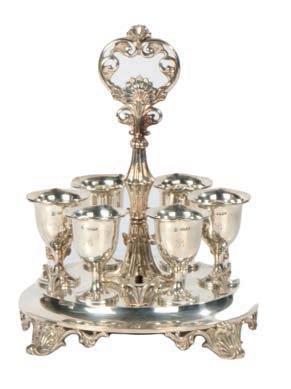

Suffolk:19CharlesIndustrialEstate,Stowmarket,Suffolk,IP145AH enquiries@bm-auctions.co.uk01449673088 Norfolk:12ManorFarm,Glandford,nrHolt,Norfolk,NR257JP norfolk.enquiries@bm-auctions.co.uk01263687342 OurOctoberauctionsatourSuffolkandNorfolksalerooms www.bishopandmillerauctions.co.uk Modern&Contemporary| ArtandInteriors Thursday6October2022 Glandford,Norfolk ASouthCoastCollection| Furniture&Sculpture Thursday20October2022 Glandford,Norfolk FineSilver Thursday27October2022 Stowmarket,Suffolk WecontinuetoinviteconsignmentstoallourauctionsacrossSuffolkandNorfolk
An Auctioneer’s Lot







Charles Hanson pays tribute to the Queen as two surprising royal lots are discovered on the Isle of Wight
For me the love for all things royal will never fade something that has been made ever stronger over the years by our late Queen. Just a few short weeks ago I enjoyed my proudest moment ever when I met her at a charity auction at Windsor Castle which I had the honour of hosting. I am also pleased to say I made her smile, because among the successful lots was a photo of the Queen with Paddington Bear from the recent Jubilee which sold for £80,000. is inspirational, loyal, devoted public servant united the nation and made us proud to be British. She brought colour and joy into all our lives. I will miss her dearly. When I said as much on Twitter the post swiftly soared to more than 1,000 likes. Hardly surprising, I know, but pleasing nevertheless.
It seems ippant to talk about auction nds as the nation comes to terms with her loss. But I hope a little light relief may be useful – especially as this column celebrates our love for all things royal.
Above Princess Beatrice in 1886
Above left Hanson’s Notty Hornblower with Princess bloomers,Beatrice’swhichhave a pre-sale guide price of £500-£1,000
Above right Notty displays Queen Victoria’s nightdress, which is expected to make £1,500-£2,000


Above far right e nightdress has the emblem ‘VR’ - Victoria Regina, under a crown
I was recently thrilled to discover a number of royal treasures on the Isle of Wight, including Queen Victoria’s voluminous nightie and her daughter
Princess Beatrice’s bloomers.
It’s not surprising to see items relating to Victoria and her family emerge on the island as the queen spent long periods staying at her holiday home of Osborne House. While there, as elsewhere, it was her habit to present1 many gifts to servants in the Royal Household.
ere was another royal connection, as the house in which the clothing was found once belonged to Sir William Carter Ho meister (1857-1944), Queen Victoria’s physician on the island.
Devoted daughter
According to our clothing consultant, Notty Hornblower, it is unusual to see a Queen Victoria night gown in pale cream, as this one is. It’s edged with Honiton lace and embroidered with ‘VR’ - Victoria Regina, under a crown. is month the nightie has an estimate of £1,500-£2,000 at our Banbury sale.
e bloomers, which belonged to Princess Beatrice (1857-1944), the fth daughter and youngest child of Queen Victoria and Prince Albert, bear a crown emblem and initials ‘BB’ for Beatrice of Battenburg. e stitching indicates they were worn in the years following her marriage to Henry of Battenburg in 1885. e bloomers have an estimate of £500-£1,000 in the same sale.



Princess Beatrice was said to be Queen Victoria’s favourite and destined to spend her entire life at her mother’s side after Prince Albert’s death in 1861. Her daughter’s indispensability meant Victoria only agreed to her marriage to Prince Henry of Battenberg on the proviso the couple lived with her after the wedding.
Princess Beatrice kept her promise. After her own husband’s early death in 1896, Beatrice succeeded him as the Governor of the Isle of Wight, living rst at Osborne with her mother and later at Carisbrooke Castle, where she spent many days editing her mother’s journals. Another outstanding example of royal devotion and duty.
e royal items go under the hammer at Hansons’ two-day ne art and antiques sale in Banbury from September 30 to October 1.

‘The recent discoveries shed light on Princess Beatrice, said to be Queen Victoria’s favourite, who was destined to spend her entire life at her mother’s side after Prince Albert’s death in 1861’
ANTIQUE COLLECTING 45
EXPERT COMMENT Charles Hanson
PuzzleTIME KNOWLEDGEYOUR
With the nights drawing in, settle down with some endish head scratchers from our resident puzzle editor Peter Wade-Wright
OCTOBER QUIZ
Q1 In which year was the rst one-dollar bill issued as a legal tender? (a) 1858, (b) 1860, (c) 1862, (d) 1864.

Q2 ‘Top-piece’, ‘vamp’ and ‘rand’ are all parts of (a) shoes, (b) wigs, (c) corsets, (d) kettles?

Q3 e shift from ‘pulps’ to digest-sized mystery and thriller magazines began with (a) Manhunt, (b) Guilty, (c) Mystery Book Magazine, (d) Ellery Queen’s Mystery Magazine
Q4 An object has the symbol ‘CC41’ on it. What does/did it mean? (a) an import from Communist China, (b) substandard but acceptable, (c) good quality, (d) cheap and custom made.
Q5 Poul Henningsen (1894-1967) was a Danish architect, designer and lm script writer. For which of the following is he perhaps best known? (a) kitchen ware, (b) lamps, (c) vases, (d) tea-sets.
Q6 Which car manufacturer survived after WWII by building the bubble-car called the Isetta? (a) Volkswagen, (b) BMW, (c) Renault, (d) Citroën.

Q7 e rst picture-book ever produced for children was published in (a) France, (b) Switzerland, (c) Germany, (d) Belgium?
Q8 In heraldry what does ‘nowed’ mean? (a) in a circle, (b) in a cartouche, (c) feathered, (d) coiled in a knot.
Q9 Original horse brasses were often made using the geometrical patterns of the suits of playing cards. Which were most common? (a) clubs, (b) diamonds, (c) hearts, (d) spades.
Q10 Which are the rarest? (a) clubs, (b) diamonds, (c) hearts, (d) spades.
Send your answers to Crossword, Antique Collecting magazine, Sandy Woodbridge,Lane, Su olk, IP12 4SD, UK. Photocopies are also acceptable, or email your answer to: threeaccartbooks.com.magazine@erstopenedbySeptember10willwinacopyof Jackson’s Hallmarks, Pocket Edition: English, Scottish, Irish Silver & Gold Marks From 1300 to the Present Day, worth £6.95

Q1 Which year saw the rst US ‘greenback’?

SOLUTION TO LAST CROSSWORD:MONTH’S
The letters in the highlighted squares could be rearranged to form the name ‘Dolly Varden’ (the name of a Victorian ladies’ hat named after a Dickens’ character in RudgeBarnaby).
The three winners who will each receive a copy of the book are: Jason Lee, Tunbridge Wells; G.T. Hill-Newton, Carshalton; and PaulineEpping.Hammersley,
Finally, here are four anagrams: clear tuition, trite bylaws, imp aped hunk and stray pet. Rearrange them, in order, to form:
(a) Pierced decoration on thin-walled porcelain.
(b) Column on 17th-century furniture (two words).
(c) A mid-19th century wax-over-papier-mâché doll with moulded hair (two words).
(d) Western European atwoven textile. For the answers turn to page 10.
Q6 Which car manufacturer made the Isetta?
Q9 Horse brasses were based on which pattern?
46 ANTIQUE COLLECTING
TEST
1 2 3 12 5 11 13 4 6 7 9 10 19 17 14 16 15 8 18 HTNILPFLEARCRDENAAIAIDUTCAORAGENLIERFAMOPONBTTRICLYRENAADROVEBIZARRNACREWIVOEAED
1Across
One of the most successful Scottish ‘art’ glassworks of the 20th century. Typically swirling, bright colours…loved by collectors. (6)
4 _____ music-stand for more than one person. Usually decorative (1770 onwards). (4)
6 Japanese porcelain (factory founded 1904). Pieces in the Royal Worcester style are highly prized. (8)
8 Chemical symbol for the metal used for Eros in Piccadilly Circus, also ___ Jolson (1886-1950) (2)
9 Quintessentially British village game. Country memorabilia are collectable especially when signed. (7)
10 One of the bits of nine across collectables. (sing.) (3)

11 Shock-resistant wood traditionally used for tool handles and as a veneer. (3)
12 Early consulted motoring accessory (well before the sat-nav). (7)
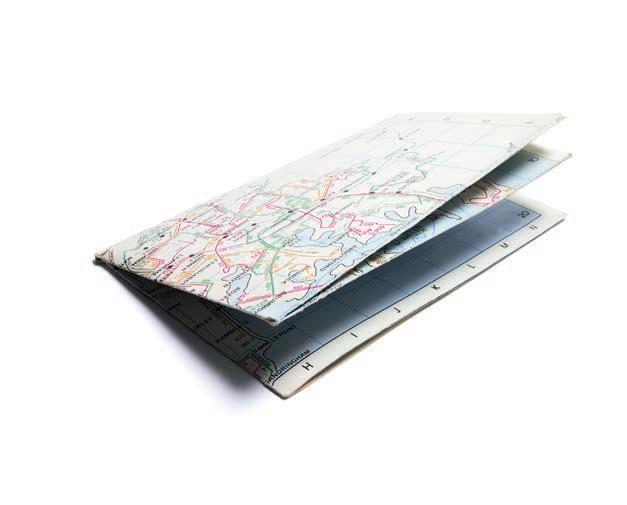
15 Chemical symbol for plutonium and, as a name, meaning ‘unworked’ . ____Ru (aka _____ Xinyu) (1896-1963) was a celebrated Chinese painter. (2)
16 Metal stand to support burning wood in a fireplace (pl.) (8)
18 Contemporary name for the high-backed, winged armchairs introduced in the late 17th century. (4)
19 _____ bell. Meant for the dining table…often highly-decorative porcelain food covering. (6)

1Down
Range of tinplate model cars and lorries made by Triang from the 1935 onwards. (5)
2 Major Norfolk city where, in 1567, Dutch potters established a local trade in tin-glazed pottery. (7)

3 Rodent, and as ___ tail a flatware decoration. (3)
4 See 17-down.
5 Bulbiferous ornamental plant that produced a 17th-century mania and stimulated the production of some amazing ceramics. (5)
7 Type of barometer (developed mid-19th century) that did not use a liquid. (7)
10 Originally the French name for a chest of drawers often with a gracefully curved front. (7)
11 Artistic symbol for the Fall of Man. (5)
13 Mixture of ingredients from which porcelain is made…also imitation gemstones. (5)
14 Small grand piano first made in 1905 (according to Steinway) or 1884 (Sohmer). (4)
17 With four down, motto used by each Prince of Wales since 1346. (3, 4) Royal Worcester dome housed on dining
Finally, rearrange the letters in the highlighted squares to form the gemstone (also known as the rainbow gem) which is found in a vast range of colours, sometimes in the same crystal. (10)
Below e Norfolk city once famed for its tin-glaze pottery
ANTIQUE COLLECTING 47
1 2 3 12 5 11 13 4 6 7 9 10 19 17141615 8 18 Below Well used by wasbeforemotoriststhesat-navinvented 12 ACROSSCLUE 19 ACROSSCLUE Left mightWhatthis
have
a Victorian
table? 2 DOWNCLUE
DENISMENACETHE
secured key loans from a variety of sources, to give visitors a chance to view pieces that have never before been seen in public. Many artworks are from private collections, including more than 70 never shown and important artworks from Jon Lys Turner, the holder of Wirth-Miller’s archive and that of his long-time partner – and later husband – Dickie Chopping.
Early days
Wirth-Miller was born in 1915 in Folkestone, Kent, where his German father Johann Wirthmuller (he later anglicised his name) ran a hotel. Wirth-Miller’s mother moved him to Bamburgh in her home county of Northumberland, where he was raised by his grandmother.After leaving school, Wirth-Miller joined the textile manufacturersTootal Broadhurst Lee, in Manchester.On work trips to thesouth he soon decided the capital was a better t for his character andin 1937 moved to London, occupying one of the painter Walter Sickert’s former studios in north London. It was in London Wirth-Miller rst met Richard ‘Dickie’ Chopping (1917-2008) and their lifelong relationship began.
Together the couple moved to Kelvedon in Essex at the outbreak ofwar and soon fell into the circle of Cedric Morris and his partner Arthur Lett-Haines, who ran the nearby East Anglian School of Painting and Drawing in Hadleigh during its heyday in the late 1940s and ‘50s.
Lucian Freud
They were at the school at the same time as Lucian Freud, whose talent was alreadyevident, d o whom both men deciding hewas arrogant –took an instant and lastingdislike. It was also where Wirth-Miller became friendlywith Francis Bacon finding commonality as outsiders – Irish-born Bacon in the UK and WirthMiller ahalf-German in London.
of one of the titans of 20th-century art, Francis Bacon (19091992), is etched in art history (this June saw his 1964 single panel from a triptych called Study for Portrait of Lucian Freud sell for £37.5m), the same cannot be said for his one-time pal and fellow artist, Denis Wirth-Miller (1915-2010).
While the pair might have moved in the same artistic circles, got blotto in the same Soho pubs and even colaborated on the same works (at one time Bacon even shared a studio with Wirth-Miller) the name of the latter remains unknown to most.
But all that may be about to change when the rst major retrospective of his work opens this month in Essex – a county where he lived for most of his life. ere is much to admire. In his heyday the work of Wirth-Miller, who died in 2010 aged 94, graced London’s leading galleries, with paintings in the collections of the Queen, the Arts Council and Contemporary Art Society. But he fell out of favour from the 1970s after failing eyesight, the onstart of dementia and a monumental fall out with Bacon scuppered his con dence – and his work. Soon collectors were only buying his work in the hope of nding a painted-over Bacon.
is month’s exhibition, at the gallery Firstsite in Colchester, is curated by the writer James Birch, who has
WCOLLECTINGhilethereputation
Above Denis Wirth-Miller (1915-2010), Gust of Wind, 1970-1971, oil on canvas, © e Estate of Denis WirthMiller.

Right Denis Wirth-Miller by Francis Goodman. Detail from contact sheet, 1971 © e Estate of Denis Wirth-Miller
After the war the pair rejoined the notorious art sets of Fitzrovia and Soho started in the 1930swith their harddrinking friendship circle including Robert Colquhoun, Robert MacBryde, John Minton and Bacon, all of whom had attended Benton End.

An exhibition opening this month in Essex puts the remarkable life and work of one of 20th-century art’s greatest unsung heroes into the spotlight
48 ANTIQUE
COLLECTING GUIDES Denis Wirth-Miller
In 1946, Wirth-Miller and Chopping moved to Wivenhoe, enjoying a professional and social life in Essex and London. e e ed e e se hey were often joined by Bacon who also had a property e e he three artists shared a complicated and at times strained relationship; they also shared a notoriety for drink-fuelled hell-raising in the local community.
Relationship with Bacon
In 1949, it was Wirth-Miller who introduced Bacon to the work of the Victorian photographer Eadweard Muybridge (1830-1904) on a visit to the V&A. Both men were fascinated by Muybridge’s 1885, 11-volume magnum opus Animal Locomotion
Like Bacon and Wirth-Miller, Muybridgewas entranced by e e n 1878 e settled a bet as to whether allfour horse’s feet ever leave theground at the same time. The results (the answerbeing they do) became the first example of chronophotography, an important step in the development of motion pictures.
Jon Lys Turner writes in The Visitors’ Book: “WirthMiller had been fascinated by the photographic sequences of animals and human figures in motion since hefirst arrived in London a decade earlier. He understood how Bacon’s interest in the triptych could be related to Muybridge’s series. After both of the artists’ deaths, copies of Muybridge’s images were found littered on the ground of both their studios ” The mutual influence didn’t stop
Left Francis Bacon (1909-1992) Dog, 1952, oil and sand on canvas © e Estate of Francis Bacon. All rights reserved, DACS 2023

Right Harringtonimageofbel’oeildistinctiveChopping’strompe-techniquecanseenonanumberFleming’sbooks,courtesyofPeter
Below right Francis Bacon (1909-1992) Head VI, 1949, oil on canvas, Arts Council Collection, Southbank Centre, London © e Estate of Francis Bacon. All rights reserved, DACS 2023

andChopping007
While totheIanintroducedAftermasterChoppinghisdevelopedWirth-Millerhisstyle,partnerDickiebecameaoftrompe-l’oeil.FrancisBaconChoppingtoFleming’swifeAnn,writerselectedhimillustratehisfamousongoing
spy series (after Lucian Freud turned down the commission).
It was Wirth-Miller who suggested the books’ font maintaining it should be utilitarian, rather than flowery, with ‘Packing Case’ being the typeface later chosen. Chopping went on to designed nine of the James Bond book covers from 1957 to 1966.
there. While in Wivenhoe, Wirth-Millerand Bacon shared a studio contributing to each other’s work, a collaboration apparent from the variety ofbrush strokes sed and see the reverse of some canvases.But theirs was a tempestuousrelationship. After a 1977 exhibition, following a publicspat with Bacon, WirthMiller destroyed his own pictures and virtually gave up painting. This month’s exhibition es e se s e e may finally give Wirth-Miller, thecredit he deserves.
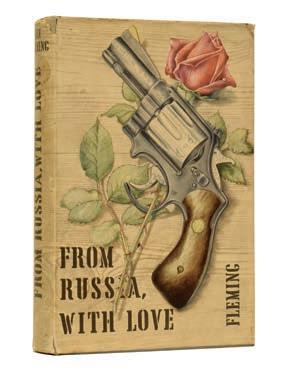
‘The Benton End group of artists, (of which Denis Wirth-Miller and his partner Dicky Chopping were marginal figures) have seen a tremendous surge in prices in recent years with a rapid succession of record prices which shows no sign of abating’
Denis Wirth-Miller: Landscapesand Beasts opens at Firstsite art gallery in Colchester on October 1. Formore details go to www.firstsite.uk
ANTIQUE COLLECTING 49
An auctioneer’s take
We asked Daniel Wright, East Anglian art specialist at Colchester-based auctioneers Reeman Dansie for his thoughts on the upcoming exhibition
the same paintings will fetch mid-thousands and that trajectory may continue. Many of Denis Wirth-Miller’s contemporaries have seen a similar trend at auction.
Benton End
e Benton End group of artists, (of which Denis WirthMiller and his partner Dicky Chopping were marginal gures) have seen a tremendous surge in prices in recent years with a rapid succession of record prices which shows no sign of abating.
While he did commercial work and illustration, he is best known for his oil paintings, usually on canvas and often on a large scale with highly sculpted impasto work, subjects include portraiture and animal subjects. Later in his career Wirth-Miller’s principle interest was
Freud centenary exhibitions
This month, to coincide with the 100th anniversary of the artist’s birth, two exhibitions of the work of Lucian Freud (1922–2011) – Denis Wirth-Miller’s arch enemy – open in London.
Lucian Freud: New Perspectives, at the National Gallery opening on October 1, explores seven decades of the artist’s works, from his early intimate pieces to the large-scale canvasses and monumental naked portraits. Meanwhile, the Garden Museum in
The forthcoming exhibition will be eagerly anticipated. Denis Wirth-Miller’s work may be familiar to many visitors from the Colchester area, but his work is perhaps not as broadly known as it should be and this signi cant exhibition will no doubt go some way to addressing that.
Works at auction come up relatively infrequently but are now keenly contested, whenever they surface, with collectors worldwide. In 2016, his top auction price of £10,500 was achieved at Reeman Dansie for a portrait of Francis Bacon, undoubtedly the subject was a key factor, and he is not known for portraits. e majority of works which have been sold are landscapes, typically of fairly large size on canvas.
20 years ago prices were very low, and good-sized oils could be purchased for mid-hundreds, nowadays
Above Denis WirthMiller (1915-2010) Portrait of Francis Bacon, 1961, estimated to make £3,000-£6,000 sold for £10,500, a record for the artist, at Reeman Dansies’ sale on April 16, 2016

Above right Lucian Freud (1922-2011), Naked Solicitor, 2003, oil on canvas. Private collection, © e Lucian Freud Archive. All Rights Reserved 2022 / Bridgeman Images, on show at the National Gallery this month

Right Lucian Freud (1922-2011) Cyclamen, 1964, oil on canvas. Private Collection, © e Lucian Freud Archive, Bridgeman Images, on show at the Garden Museum this month

‘‘‘Wirth-Miller and Francis Bacon were known to collaborate on each other’s work. While WirthMiller paintings are becoming more expensive, they may still be the cheapest Bacon works on the market”’
50 ANTIQUE COLLECTING
COLLECTING GUIDES Denis Wirth-Miller
landscape, marsh and moorland. He was undoubtedly a fine artist and hisstyle, which is so evocative of the period in which he made his name, is now coming of age.
His infamous bad behaviour in Soho and latterly bohemian Wivenhoe, and that of partners-in-crime Dicky Chopping and Francis Bacon, only adds to that appeal. Would-be collectors of Wirth-Miller may also be interested to know that he and Bacon were known to often collaborateand add elements to each other’s works so while Wirth-Miller s paintings are becoming more expensive, they may still be the cheapest Francis Bacon works on the market.

Lambeth considers Freud’s depictions of plants and gardens, bringing together a selection of rarely or never-before-seen paintings and etchings of potted plants and gardens. Freud learnt his skills as a botanic artist while studying under Cedric Morris at the East Anglian School of Art in Suffolk (also attended by Denis WirthMiller).
Lucian Freud: Plant Portraits opens at the museum on October 14, with Lucian Freud: New Perspectives, at the National Gallery from October 1 to January 22, 2023.

Jon Lys Turner was a friend of both Wirth-Miller and Chopping and the author of The Visitors’ Book: In Francis Bacon’s Shadow: The Lives of Richard Chopping and Denis Wirth-Miller
QWithout Wirth-Miller’s links to Bacon would we be talking about him?

ADenis was represented by the Lefevre and the Beaux Arts (a really big deal) before his friendship with Bacon was well known. His landscapes from the 1950s were radical and his canvases show an extraordinary mixture of anger, violence and charm with thrown, spattered paint and layered textures as well as mad scratchings. The results were arresting country themes, depicting the equally unpredictable East Anglian landscape.
Interestingly, many letters from his gallery indicate that he wanted to return to his more experimental days as an artist, but his landscapes sold very well – and Denis had an expensive lifestyle he wished to keep.
QDoes he have any similarities to Bacon’s style and vice versa?
AThe violent use of paint and brushstroke and attacking a canvas are common to both. When I first met them (as a student at the Royal College of Art) I used to think there was an unspoken pact that Denis would paint landscapes in a certain frenetic way while Francis Bacon would be more figurative.
I later learnt they painted the same topics, such as wrestlers, again inspired by Muybridge’s work (below).

Q&AQWas there a reason for WirthMiller’s fascination with dogs?
AI can only assume it came from the beautiful movement of dogs seen so clearly in Muybridge’s work which he mixed with their potential menace – a charm mixed with viciousness. Movement was also a key component of his landscapes.Hewasn’ta big dog fan, however. Chopping had a boxer named Tosca who had a litter of puppies that ran riot in the Storehouse for many months.
QWhat do you admire most about both his work and him?
ADenis had no real opportunities in life but climbed high. He was halfGerman, born at the end WWI– his mother had to go into service and a life of crime could have been a possibility for him. He was talented, dangerous and unpredictable. Just entering their house was a treat .... the smells of French cuisine mingled with paint, with estuary light pouring through the window and Maria Callas records playing.
QWhich work would you save from a burning house?
AMentioning house fires, the couple’s Wivenoe home was set alight by George Dyer when he visited with Bacon in1963 and accidentally flicked a cigarette butt onto the studio floor.
If I had to save one from the flames it would be the Lucian Freud portrait Denis gave me, telling me to get it authenticated if it was the last thing I did. I need to thank the BBC research team on Fake or Fortune for the picture now being 100 per cent authenticated and to be included in next year’s Lucian Freud catalogue raisonné.
Below Lucian Freud (1922-2011), Self-portrait, 1939, © e Lucian Freud Archive. All Rights Reserved 2022/ Bridgeman Images, on show at the National Gallery this month
Below right Two men wrestling. Photogravure after Eadweard Muybridge, 1887, credit Creative Commons Attribution 4.0
ANTIQUE COLLECTING 51
Two portraits of Stanley Baldwin (1867-1947), the 1st Earl of Bewdley and three-time British prime minister during the 1920s and ‘30s, go under the hammer at Mallams’ picture sale in Oxford on October 12.
This first, an oil on panel shows a youthful Baldwin holding a tennis Measuringracket.43cm x 43cm, it was painted by Baldwin’s cousin, Philip Burne-Jones (1861-1926) and has an estimate of £6,000-£8,000. A second portrait by John Seymour Lucas (18491923) has an estimate of £3,000-£5,000 in the same sale. Both are from the estate of Baldwin’s grandson, Edward.

Above Philip Burne-Jones’ (1861-1926) portrait of the young prime minister, 1891, has an estimate of £6,000-£8,000
A portrait of Isambard Kingdom Brunel (18061859) by his brotherin-law John Callcott Horsley (1817-1903) has an estimate £10,000-£15,000ofat The Canterbury Auction Gallery’s two-day sale on October 1-2.

The portrait reflects a different side to the stove-pipe exhibitedBrunelgrandson,belongedindustrialisthat-wearingandoncetohisgreatSirHumphreyNoblewhoatTheVictorian

Era Exhibition in 1897. Two years after Brunel sat for the original portrait, he died aged just 53 in 1859, after suffering a stroke on the deck of the SS Great Eastern. As well as portraiture, the artist John Horsley’s popular claim to fame was as the designer of the first Christmas card.
Above right e engineer sat for the portrait two years before he died at the age of 53
A limited-edition writing set by Conway Stewart including a “Churchill” red ripple fountain pen, paperwork and Don Ramos cigar has an estimate of £150-£200 at Lacy Scott and Knight’s (LSK) October 4 sale.

Conway Stewart was Churchill’s favoured pen maker with the wartime leader’s archive containing a letter and an invoice for three of their fountain pens.
At the same sale a Maki-e Japanese pen, one of 60 made for members of the Fountain Pen Network and decorated with enamel lacquer and gold leaf has an estimate of £400-£500. The lid features a Japense haiku, which translates as: Like a clam from its shell, setting off for Futami Bay, departing Autumn

A rare seascape by Laurence Stephen Lowry (1887-1976), last seen on public view at an exhibition in 1967, has an estimate of £400,000-£600,000 at Tennants’ sale on October 15.

Lowry was fascinated by the sea, with most of his seascapes depicting the bustling resorts of Lytham and Rhyl on the northwest coast which he visited with his overbearing mother. After her death in 1939 the artist was free to choose his own holiday destinations, often at the Seaburn Hotel in Sunderland, with a room overlooking the sea. The painting on sale titled The North Sea dates to 1966, when Lowry was 79, and is one of the finest examples of his rare, largescale seascapes.
COLLECTINGTOP of the LOTS
Left L.S. Lowry (18871976) e North Sea,1966, has a pre-sale guide price of £400,000£600,000
LSK’s Helen Robson, said: “Due to their very limited production, these pens rarely make it on to the open market, this is an exquisite example.”




 Above right John Seymour Lucas’ (1849-1923) portrait shows Stanley Baldwin reading a newspaper
Above right John Seymour Lucas’ (1849-1923) portrait shows Stanley Baldwin reading a newspaper
From the art collection of the former prime minister Anthony Eden, to two paintings of his predecessor Stanley Baldwin there is much to excite collectors
Below left Maki-e Japanese pens are a work of art in their own right
Below right Churchill was a regular customer of Conway Stewart pens
52 ANTIQUE
ANTIQUES UNDER THE HAMMER Lots in October
For a prime minister who served in the ‘50s, Anthony Eden (1897-1977), was responsible for a surprisingly contemporary art collection, some of which goes under the hammer this month at Christie’s, King Street.



Royal biographer and friend Hugo Vickers said: “Eden, was not only one of the most distinguished politicians of the 20th century, foreign secretary and prime minister, but a man of high artistic and aesthetic discrimination.”
His fine taste may have been in part due to his wife, born Clarissa Churchill (1920-2021) – the niece of the wartime prime minister – who studied at the Slade School of Art before reading philosophy at Oxford. A spirited young woman, she spent the war decoding telegrams on the top floor of the Dorchester Hotel.
The pair married in 1952 with a reception hosted at Number 10 by Winston and Clemmie Churchill. 20 years her husband’s junior, the new Countess of Avon, who died last year aged 101, possessed “notably exquisite taste.”
As did, it would appear, her husband who succeeded Winston Churchill in 1955 and was at the country’s helm during the the botched Suez crisis. Eden enjoyed a cosmopolitan outlook – some even calling him the most glamorous male politician of the 20th century.
Fashionable circles
The newlyweds moved in the most fashionable London circles counting luminaries of the capital’s artistic and social scene among their friends, including Lucian Freud, and Peter Brook, with Lady Avon even including the actress Greta Garbo among her close friends.
Eden had a particular affinity with French culture, which is evident in the works in his collection by Pablo Picasso, Georges Braque, Edgar Degas, Marie Laurencin and JeanBaptiste-Camille Corot. However, the art collection is led by important Modern British art; including two paintings by Winston Churchill given to Eden during his political career, three works by Sir John Lavery and works given to Lady Avon by Cecil Beaton and David Jones.
The sale also features highlights from Eden’s library, including signed Churchill, Field Marshal Montgomery and De Gaulle editions, alongside signed works given to Lady Avon by Evelyn Waugh and Noël Coward.
The collection was housed originally in the Edens’ two Wiltshire country homes and later at the London apartment Lady Avon moved to in 1977 aged 57 when her husband died.

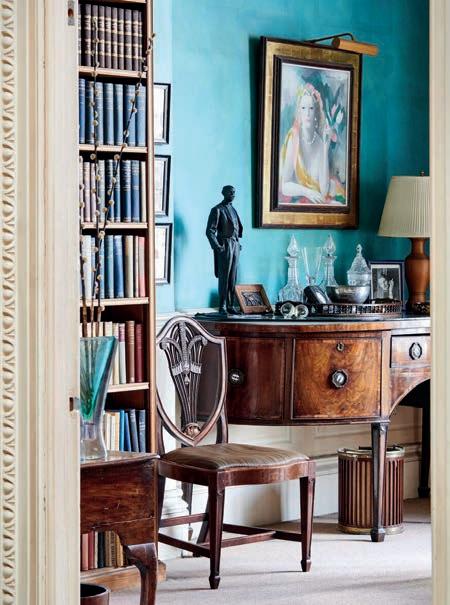
Fine English furniture is also on offer with a pair of George I gilt-gesso tables originally from Ham House, Richmond having an estimate of £100,000-£150,000.

On retiring from the House of Commons and entering the House of Lords, Eden was created Earl of Avon in 1961.
An exhibition Churchill to Eden: The Collection of The Earl and Countess of Avon takes place from October 15–20 at Christie’s with the live sale on October 21. Estimates range from £500-£400,000.
1 Sir John Lavery (1856-1941) Portrait of Gwendoline Spencer-Churchill (Lady Avon’s mother) has an estimate of £50,000-£80,000 at this month’s sale 2 e library of Lady Avon’s London home 3 Marie Laurencin (18831956), Primavera, (as seen in the library of Lady Avon’s London home). It has an estimate £70,000-£100,000 4 Sir Winston Churchill (1874-1965) Still Life Silver, Chartwell. It has an estimate of £400,000-£600,000 at this month’s sale 5 Pablo Picasso (1883-1973), Le Gamin, from the Walter P Chrysler Collection. It has an estimate of £40,000-£60,000 6 A 17th-century Mughal velvet fragment, measuring 3ft 4in. by 2ft 4in. (101cm x 72cm). It has an estimate of £25,000-£35,000. 7 A pair of George I giltwood side tables. e pair has an estimate of £100,000-£150,000
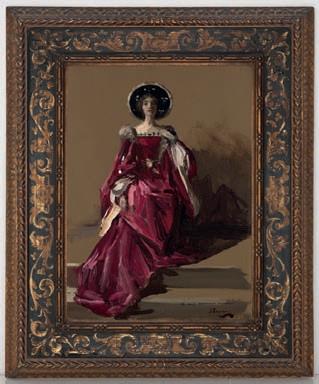

ANTIQUE COLLECTING 53 1 2 3 4 5 6 7
NEWSFAIR


Racing ahead
The Grandstand Pavilion at Chester Racecourse is the location for this month’s Chester Decorative Antiques and Art Fair from October 7-9.
The event follows the cancellation of the usual February fair due to the road closures in the area.
Fun of the fair
Following last year’s successful inaugural event at Compton Verney Art Gallery and Park, the popular Cotswold Art and Antiques Dealers’ Association (CADA Fair returns to the same Warwickshire venue thisThemonth.10th annual fair, from October 13-16, will see up to 27 exhibitors, including new CADA member, Cheltenhambased Houlston UK Ltd, which will be offering a William and Mary oak food cupboard, c.1690, with price tag of £4,950 and a Charles II needlework picture, c.1670, priced £5,850.
Antique Collecting’s David Harvey will also be presenting a burr walnut fall-front escritoire, c.1690, priced £25,000 at the fair. Sign up for a free ticket for two at www.thecada.org
More than 40 exhibitors, many of them local to the northwest, including local Chester furniture specialist Mike Melody Antiques, Rowles Fine Art from Ludlow, and Church Street Antiques from Altrincham. The fair has been organised by Cooper Events since 2018. For complimentary tickets go to www.cooperevents.com
Above Victor Gabriel Gilbert (1847-1943) A Warm Welcome, oil on canvas, on sale from Gladwells & Patterson, Rutland, priced £29,500

Square fair
A gateleg table by Gordon Russell dated 1926 and a brass chandelier by WAS Benson, c. 1900 are among the pieces on offer from London antiques dealer H. Blairman & Sons at this month’s PAD (Pavilion of Art and Design) fair in Mayfair.
Taking place in a purpose-built tent on Berkeley Square from October 10-16, the celebrated art and design fair sees 67 galleries from around the world, ranging in location from New York to Beirut, come together.
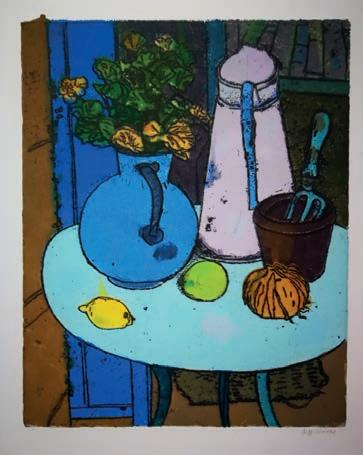
Capital thinking
London calling
A firm favourite for buyers in search of individual style and decorating ideas, the autumn Decorative Fair returns to its home at a purpose-built pavilion in London’s Battersea Park thisRunningmonth. from October 4-9, with a free shuttle bus from Sloane Square, 160 dealers will offer everything from classic interiors to eclectic modern pieces. New for this event is a curated contemporary section, including modern craft and design, on the pavilion’s mezzanine.
Coinciding with Asian Art in London – the month-long celebration of Eastern antiques in the capital – November’s Chelsea Antiques and Fine Art Fair has a distinctly Oriental theme.

The fair, from November 2-6, which takes place in the King’s Road’s famous town hall, is the longest established event of its kind, having run consecutively at the same venue since 1951.
Fair director Sophie Wood said: “For collectors and interior designers, November is a key time to visit London, with other large fine art and antiques events, specifically the Art and Antiques Fair at Olympia and Asian Art in London.”



Japanese specialist Steve Sly will be showcasing two Meiji period, dragon-mounted tantos (swords) each priced £50,000; while Lymington-based Wick Antiques will offer a Chippendale-style Chinese fretwork display cabinet, c. 1895, which is priced £22,500.
Above e fair takes place in Chelsea Town Hall in London
 Above A previous stand from East Sussex dealer Martin D Johnson Antiques
Above e fair takes place in London’s Berkeley Square
Above A previous stand from East Sussex dealer Martin D Johnson Antiques
Above e fair takes place in London’s Berkeley Square
Check out the latest and best upcoming fairs, while bagging yourself free tickets into the bargain
Above Je Clarke (b.1935) Variation Objects on a Greek Table, original colour intaglio print, on sale from Elizabeth Harvey-Lee priced £750
54 ANTIQUE COLLECTING
OUT AND ABOUT October
We Are Actively Seeking Consignments Fine Art & Antiques, Silver & Jewellery, Objet d’Art, Coins & Medals Clocks and Watches.
The Canterbury Auction Galleries is Kent’s premier Saleroom for Fine Art and Antiques with an International Reputation Dealing with the Valuation and Sale of a Single Treasured item through to the Complete Contents of a Country Estate.
Bi-Monthly Two Day Specialist Weekend Online Auctions of Fine Art & Antiques, Silver & Jewellery Objet d’Art, Coins & Medals, Clocks & Watches Antique Furniture and Toys.

Please Visit Our Website for More Details thecanterburyauctiongalleries.com



Call Us to Book a Valuation Appointment at Home or at Our Saleroom in Canterbury. All Appointments are subject to current social distancing guidelines.
Please Contact; Cliona Kilroy mrics - Director Dave Parker bsc (hons) asfav Managing Director Telephone: 01227 763337 email: general@tcag.co.uk
40 Station Road West Kent,CanterburyCT28AN
of
FAIRS Calendar
Because this list is compiled in advance, alterations or cancellations to the fairs listed can occur and it is not possible to notify readers of the changes. We strongly advise anyone wishing to attend a fair especially if they have to travel any distance, to telephone the organiser to confirm the details given.
LONDON: Inc. Greater London
Etc Fairs 0871 942 9222, Holiday Inn, Coram Street, Bloomsbury, London, WC1N 1HT, Bloomsbury Ephemera Fair, Oct 30 Bloomsbury Book and Photograph Fair, Oct 9
Harvey (Mgt. Services) Ltd 020 7262
Thewww.decorativefair.com8989DecorativeAntiques &
Textiles Fair, London Evolution (The Marquee), Battersea Park, London, SW11 4NJ, Oct 4-9
Sunbury Antiques 01932 Thames,StainesKemptonSunburywww.sunburyantiques.com230946AntiquesMarket,ParkRaceCourse,RoadEast,Sunbury-on-MiddlesexTW165AQ, Oct 11, SOUTH25EAST
& EAST ANGLIA: including Beds, Cambs, Essex, Hertfordshire, Kent, Norfolk, Suffolk, Surrey, Sussex.
Love Fairs 01293
RacecourseLingfiwww.lovefairs.com690777eldParkRacecourse,Road,Lingfield, RH7
6PQ, Oct 23
Marcel Fairs
WD3Rickmansworth,SarrattAntiquewww.marcelfairs.co.uk07887648255&CollectorsFair,VillageHall,TheGreen,Herts6AS,
Oct 9
Antique & Vintage Fair, Eagle Farm SG18Biggleswade,RoadBedfordshire8JH, Oct 16,
Melford Antiques Fair 07837
CO10LongFair,Longwww.melfordantiquesfair.co.uk497617MelfordAntiques&VintageTheOldSchool,HallStreet,Melford,Suffolk,9DX,
Oct 29-30
Cameo Fairs 07790 126967
Corfe Castle Antiques & Vintage Fair, Village Hall, East Street, Corfe Castle, Dorset, BG20 5EE, Oct 2 Minstead Antique Fair, Village Hall London Road, Minstead SO43Hampshire,7FX, OctEAST16MIDLANDS
including Nottinghamshire,Northamptonshire,Leicestershire,Derbyshire,Lincolnshire,Rutland.
Arthur Swallow Fairs 01298 Lincolnshirewww.asfairs.com27493Showground, Lincoln, LN2 Antiques2NA,& Home Show, Oct 5 Vintage Flea Market, Oct IACF1601636
CollectorsNewarkShowground,Newarkwww.iacf.co.uk702326andNottinghamshireNotts,NG242NY,InternationalAntiqueandFair, Oct 6-7
NORTH including Cheshire, Cumbria, Lancashire, Northumberland, Tyne and Wear, Yorkshire.
Arthur Swallow Fairs
01298 Antiqueswww.asfairs.com27493&Salvage Market
Clay House Farm, Flittogate Ln, Tabley, Knutsford ,WA16 0HJ
Oct Cooper1 Events
01278 Chester&Thewww.cooperevents.com784912ChesterDecorativeAntiquesArtFairCountyGrandstand,RacecourseCH12LY, Oct 7-9
The Northern Antique Dealers Fair
01797
YorkshirerHarmbyThewww.northernfair.com252030GardenRoomsatTennants,Road,Leyburn,NorthDL85SG,
Sept 29 -Oct 2
BN16Rustington,Centre,CollectablesRustingtonwww.antiques-atlas.com589725AntiquesandFair,TheWoodlandWoodlandsAvenue,WestSussex,3HB, Oct 2
Arun Fairs 07563
SOUTH WEST including Oxfordshire,Hampshire,Devon,Buckinghamshire,Berkshire,Cornwall,Dorset,Gloucestershire,IsleofWight,Somerset,Wiltshire.
AFC Fairs 07887
Black Dog Events 01986 Showground,Antiqueswwwablackdogevent.com948546andArtisans,SuffolkIP38UH,
Oct 15-16
Continuity Fairs 01584 Downs,Fair,Epsomwww.continuityfairs.co.uk873634AntiqueandCollectibleEpsomRacecourse,EpsomEpsom,Surrey,KT185LQ, Oct Essex18Clock and Watch Fair
Cornwall,PleyberLostwithielThewww.antiquefairscornwall.co.uk753956LostwithielAntiqueFair,CommunityCentre,ChristWay,Lostwithiel,PL220HA,
Oct 9
Pensilva Antique & Collectors Fair, Millennium House, Princess Road, Pensilva, Liskeard, Cornwall, PL14 5NF, Oct 30
Runway Monday at Newark Antiques and Collectors Fair, OctWEST24 MIDLANDS including Birmingham, Coventry, Herefordshire, Shropshire, Staffordshire, WorcestershireWarwickshire,
B2B Events 01636 Malvernwww.b2bevents.info676531FleaandCollector’s Fair,
Three Counties Showground, Malvern, Worcs, WR13 6NW, Oct Coin9and
Medal Fairs Ltd. 01694
V and A Fairs 01244 CW5Nantwich,TownAntiquesNantwichwww.vandafairs.com659887TownSquareMarket,NantwichCentreCheshire,5DH, Oct 22
Antiques Market, Civic Hall
Nantwich, Beam Street, Nantwich, Cheshire, CW5 5DG, Oct ContinuityWALES20
Fairs 01584
Hampshire,Centre,Fair,Emsworthwww.antiques-atlas.com589725AntiquesandCollectorsEmsworthCommunityNorthStreet,Emsworth,PO107DD,
Arun Fairs 07563
Oct 9
Thewww.coinfairs.co.uk731781MidlandCoinFair, National Motorcycle Museum, Bickenhill, B92Birmingham,0EJ, Oct CADA9
Gwalchmai,VintageThewww.continuityfairs.co.uk873634MonaAntiqueandFair,TheShowground,Holyhead,LL654RQ, Oct AyrSCOTLAND15-16Antique, Vintage & Collectors Fair
07851
CO6MarksOldMarkswww.ipswichbhi.org.uk870185TeyParishHallLondonRoadTey,Colchester1EJ,
Continuity Fairs 01584 8FD,Road,MatfordExeterwww.continuityfairs.co.uk873634AntiqueandFleaMarket,Centre,MatfordParkMarshBarton,Exeter,EX2
The Cotswold Art & Antiques Dealers’ Association Fair 07855
CV35Park,Comptonwww.cotswolds-antiques-art.com44913VerneyArtGalleryandWarwickshire,9HZ,
Oct 13-16
07960 Citadel198409Leisure Centre, South Harbour Street, Ayr, Ayrshire, KA7 1JB, Oct Glasgow,29
Antique, Vintage & Collectors Fair 07960 198409
31 Bellahouston Drive, Glasgow, G52 1HH, Oct 16
56 ANTIQUE COLLECTING
Oct 1
Oct 23






Tel: 01636 CollectorsMalvernwww.b2bevents.info676531Flea&MarketThreeCountiesShowground,Worcestershire,WR136NWUp to 400 inside & outside exhibitors. Entrance: 7.30am-3.30pm - £5 Sunday 9th October Sunday 4th December Please check www.b2bevents.info in case dates have changed or been cancelled If your passion is up-cycling, recycling, salvage, decorative or collecting then the Flea Market is the place to visit, with inside and outside dealers a whole host of unusual and useful items can be found. CANCELLED COMPTONVERNEYARTGALLERY&PARK COMPTONVERNEY,WARWICKSHIRE CV359HZ 13 16OCTOBER2022 THURSDAY-SUNDAY 11AM -5PM Complimentaryticketscovering admissiontothefairandthe groundsareavailable onlineat: www.thecada.org Furtherinformation T:07855443913 THECOTSWOLD ART&ANTIQUESDEALERS' ASSOCIATIONFAIR Sponsoredby ANTIQUE COLLECTING 57 LOWESTOFT PORCELAIN AUCTION Wednesday19thOctoberZOËSPRAKE 2022, 7pm Viewing 3 7pm Hotel Victoria, Lowestoft, NR33 0BZ Guest auctioneer: Elizabeth Talbot of TW Gaze telephone:email:website:www.lowestoftchina.co.uklowestoftchina@gmail.com01986892736/07885773795
SSALEROOMPOTLIGHT
A single-owner collection of Moorcroft miniatures could produce some big results in a Berkshire sale of 19th-20th century design this month

Dedicated
collectors of miniature ceramics by the designer William Moorcroft (1872-1945) have for decades enthusiastically embraced the maxim “small is beautiful.”
An upcoming sale at Dawsons Auctioneers in Berkshire this month o ers an impressive single-owner collection of his diminutive works of art, numbered in groups that exceed 50 lots.
Big demand
Moorcroft pottery has remained a rm favourite with collectors ever since William Moorcroft set up on his own in 1913. He combined raised slip decoration with transfer printing, slip trailing and underglaze colouring that were to become his hallmarks. While prices for larger examples by Moorcroft at auction may have fallen some 25-40 per cent in recent years, collectors still clamour for good miniature examples. Miniatures, produced in most patterns, are a collecting eld of their own. Some tiny rarities from the Macintyre era can command sums to rival those for full-size versions.
Part of the appeal is collectors’ appreciation of the craftsmanship that goes into producing pieces of such
Above A single owner collection of Moorcroft miniatures
Above right William Moorcroft for James MacIntyre, a miniature ighteenth Century vase and a matching pattern vase of ogee chalice form, estimate £250-£350
smallness, detail and intricacy. Miniatures have long commanded a commercial worth far outweighing their diminutive stature. Even in 1973 many of these 2½-3½in high vases, jugs and bottles were £30 each. e same pieces can now average around £150-£300 today.
Rarer issues which are highly sought after include examples made during Willian Moorcroft’s tenure as head of the art pottery department at James Macintyre & Co. in Burslem, Stoke-on-Trent from 1872 until 1913 when he opened a factory at Cobridge Park.
In 1919, a ambé kiln was introduced in which Moorcroft experimented with a number of techniques, delighting in the unpredictable nature of the ambé ring process and the e ects it produced.
is month’s sale on October 6 sees a trio of miniatures made up of a Violet vase, c.1908, a baluster vase with a similar pattern and an inverted baluster Poppy vase going under the hammer with a pre-sale guide price of £600-£800. A pair of blue ground jugs, one glazed with a Poppy pattern, and the other stippled with a Poppy Garland pattern have the same estimate.
As well as the classic Poppy and Violet patterns,
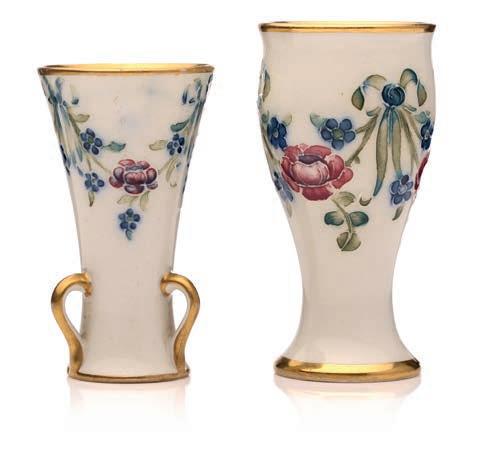
58 ANTIQUE COLLECTING
ANTIQUES UNDER THE HAMMER Moorcroft miniatures
the collection also contains a range of other traditional Moorcroft patterns including Eighteenth Century Alhambra, Pomegranate, Honesty and Forget Me Not.

Sale of the century
Alongside the Moorcroft pottery, the sale will showcase various items from British, European and international design movements. Look out for pieces by William Morris, Augustus Pugin, René Lalique, Liberty & Co, Lucie Rie, Gallé, the Martin Brothers and the Guild of Handicraft.
AUCTION fact file

WHAT: 100 Years of Design: 1860-1960 When: October 6 from 9.30am Where: Dawsons, Unit 8, 7BUMaidenhead,ClivemontBusinessCordwallisPark,Road,SL6
Viewing: A selection of lots will be on view from October 3-5 at co.ukdawsonsauctions.out10am-5pm.saleroomDawsons’betweenFindmoreatwww.
Above left William Moorcroft for James MacIntyre, a miniature Violet vase, c. 1908, a similar patterned baluster vase and inverted baluster Poppy vase. e trio has an estimate of £600-£800 at this month’s sale

Left A large makehallwood19th-centurylatecarvedBlackForestbearstand,isexpectedto£2,000-£3,000

Below William Moorcroft miniature Pomegranate vases, one signed W Moorcroft in green. ey have an estimate of £600-£800
Below right A pair of Charles Eames vintage chairs, which has an estimate of £250-£350
IN OPINION...MY

We asked Dawsons’ saleroom manager, Peter Mason, about his interest in the design period from 1860-1960
Which design trends from the era are most popular?
100 years is a long time, taking us from the arts and crafts movement, to the tail-end of the gothic revival and ending with The Beatles. As a result, everyone has their favourite era, whether art nouveau, art deco, Modernism or mid-century. While we continue to see strong results at auction in all areas, art deco is not quite as hot as it was 20 or so years ago. However, the best examples of original period ceramics, glass, furniture and the wider decorative arts retain their appeal. Fashions may change, but design classics endure.
Have you got a favourite piece from the sale?
A pair of vintage aluminium chairs on a revolving five-spoked base by the American designer Charles Eames (1907-1978). They are part of the Eames Aluminium Group, including armchairs, easy chairs and dining chairs. Introduced to the European market in 1959, they the range is widely considered to be one of the great furniture designs of the 20th century. The pair has an estimate of £250£350 in this month’s sale.

Any pieces for the new collector? We have high hopes for the collection of Moorcroft miniatures. They would be a great way to start a new collection.
Where are you expecting interest to come from?
We are hoping to show the wide range of items within the decorative artscategory, so would hope there is something for everyone. It is a chance to get hold of some great items of design for the home – whether it be furniture,
‘The best examples of original period ceramics, glass, furniture and the wider decorative arts retain their appeal - fashions may change, but design classics endure’
ANTIQUE COLLECTING 59
AUCTION Calendar
Because this list is compiled in advance, alterations or cancellations to the auctions listed can occur and it is not possible to notify readers of the changes. We strongly advise anyone wishing to attend an auction especially if they have to travel any distance, to telephone the organiser to confirm the details given.
LONDON: Inc. Greater London
Bonhams
101 New Bond St, London W1S 1SR, 020 7447 7447
Design,www.bonhams.com Oct 4
Fine and Rare Wines, Oct 6
Impressionist and Modern Art, Oct 12
Post-War & Contemporary Art, Oct 13
Modern and Contemporary African Art, Oct 19 Pop X Culture, Oct 20 Islamic and Indian Art, Oct 25
Bonhams
Montpelier St, Knightsbridge, London, SW7 1HH, 020 7393
Handbagswww.bonhams.com3900andFashion, Oct 4
The Contents of Kinsham Court, Oct 12
Knightsbridge Jewels, Oct 12
Silver and Objects of Vertu, Oct 20-21
The Marine Sale, Oct 25 Asian Art, Oct 31
Chiswick Auctions
1 Colville Rd, Chiswick, London, W3 8BL, 020 8992
andModernwww.chiswickauctions.co.uk4442&ContemporaryPrintsMultiples, Oct 5
Autographs & Memorabilia Oct 12
Silver & Objects of Vertu, Oct 19
Master Prints from a Private Collection, Oct 19 Photographica Live, Oct 20
Islamic Art - Property of a European Collector Part IV, Oct 28 Islamic & Indian Art, Oct 28
Christie’s 8 King St, St. James’s, SW1Y 6QT, 020 7839 9060
Modernwww.christies.comBritishand Irish Art Evening Sale, Oct 19
Modern British and Irish Art Day Sale, Oct 20
Art of the Islamic and Indian Worlds including Oriental Rugs and Carpets, Oct 27
Forum Auctions
220 Queenstown Road, London SW8 4LP, 020 7871 2640
Modernwww.forumauctions.co.ukLiterature(online), Oct 13
Editions and Works on Paper, Oct 19
Forum Auctions @ Artsy: Autumn Selection, Oct 25
Hansons Auctioneers
The Normansfield Theatre, 2A Langdon Park, Teddington TW11 9PS, 0207 018
Georgianwww.hansonsauctioneers.com9300Auction, Oct 6
The Tissington Sweet Shop, Oct 8 Derbyshire Fine Art Auction, Oct 13
Medals and Militaria Auction, Oct 14, Library Auction, Oct 28
Lyon & Turnbull
Mall Galleries, The Mall, St. James’s, London SW1Y 5AS, 0207 930
Selectwww.lyonandturnbull.com9115Jewellery, Oct 11
Select Watches, Oct 11 Lalique, Oct 27
Modern Made: Modern & Post-War Art, Design & Studio Ceramics, Oct 28
Noonans (formerly Dix Noonan Webb) 16 Bolton St, Mayfair, W1J 8BQ, 020 7016 1700
Orders,www.noonans.co.ukDecorations, Medals and Militaria, Oct 12 English Coins, Oct 13 Ancient Coins, Oct 13
Roseberys Knights Hill, Norwood, London, SE27 0JD 020 8761
Art,Modernwww.roseberys.co.uk2522Britishand20th-Century Oct 11
Antiquities, Islamic and indian Art, Oct Sotheby’s25
New Bond St., W1 020 7293
Ornellaiawww.sothebys.com5000Vendemmia d’Artista 2019, Il Vigore, Oct 5-19
Modern & Contemporary African Auction, Oct 14-20
Modern Discoveries, Oct 13-20
The Sex Pistols: The StolperWilson Collection, Oct 10-21
The Orientalist Sale, Oct 25
Modern & Contemporary South
Asian Auction, Oct 25 20th Century Art / Middle East, Oct 19-25
Arts of the Islamic World & India including Fine Rugs, Oct 26
SOUTH EAST AND EAST ANGLIA: Inc. SuffHertfordshire,Cambridgeshire,Bedfordshire,Essex,Kent,Norfolk,olk,Surrey,Sussex
Bishop and Miller
19 Charles Industrial Estate, Stowmarket, Suffolk, IP14 5AH, 01449 Selectedbishopandmillerauctions.co.uk673088Antiques, Oct 12
Monthly Jewellery and Silver, Oct 19 Collectable Ceramics, (Online) Oct 23
Selected Antiques, Oct 26 Fine Silver, Oct 27 General Military & Medals (Online) Oct 30 Music (Online ), Oct 30
Bishop and Miller Unit 12 Manor Farm, Glandford, Holt, Norfolk, NR25 andModernbishopandmillerauctions.co.uk7JPandContemporaryArtInteriors,
Oct 6
A South Coast Collection of Furniture and Sculpture, Oct 20
Bellmans WisboroughNewpound,Green,West Sussex, RH14 0AZ, 01403 Wineswww.bellmans.co.uk700858andSpirits, Oct 3
Fine Printed Books & Manuscripts, Oct 11
Old Master, British & European Paintings, Oct 11 Asian Ceramics & Works of Art, Coins, Medals, Watches, Jewellery & Interiors, Oct 12-13 The Friday 500, Oct 14
Burstow & Hewett The Auction Gallery, Lower Lake, Battle, East Sussex,TN33 0AT, 01424 772 Homeswww.burstowandhewett.co.uk374andInteriors, Oct 5-6
Luxury Watches & Clocks, Fine Jewellery and Silver, Oct 19 Antiques, Ceramics, Oriental, Furniture, Etc, Oct 20 Fine Art and Sculpture, Oct 20
The Canterbury Auction
Galleries 40 Station Road West, Canterbury, Kent, CT2 8AN, 01227
Antiques,canterburyauctiongalleries.com763337 Oct 1-2
Cheffins Clifton House, Clifton Road, Cambridge, CB1 7EA 01223
Thewww.cheffi213343,ns.co.ukInteriorsSale,Oct 6
The Library Sale, Oct 13 The Art & Design Sale, Oct 27
Durrants Auctions
The Old School House, Peddars Lane, Beccles, Suffolk, NR34 9UE, 01502
Nonewww.durrantsauctions.com713490listedforOctober
Ewbank’s London Rd, Send, Woking, Surrey, 01483 223 ofJameswww.ewbankauctions.co.uk101Bond,60Years007,
Oct 6
Antique and Collectors
inc Silver, Oct 12 Contemporary Art, Editions and Modern British Pictures, Oct 26
Decorative Arts, Vintage and Modern Design, Oct 26 Vintage Fashion and Textiles, Oct 27 Asian Art, Oct 27
Excalibur Auctions Limited Unit 16 Abbots Business Park
Primrose Hill Kings Langley, Hertfordshire, WD4 8FR 020 3633
ComicMarvel,wwwexcaliburauctions.com0913DCandIndependentBooks, Sept 3
Gorringes
15 North Street, Lewes, East Sussex, BN7 2PE, 01273
Autumnwww.gorringes.co.uk472503BookSale, Oct Horners11
the Auctioneers
Old Norwich Road, Acle Norwich, Norfolk, NR133BY 01493 750 Gunswww.horners.co.uk225atNoon(Live Online), Oct 8
60 ANTIQUE COLLECTING
John Nicholson’s
Longfield, Midhurst Road, Fernhurst, Haslemere, Surrey, GU27 3HA, 01428
Picturewww.johnnicholsons.com653727andPaintingSale,Oct 5
General Sale, Oct 15
Oriental Sale, Oct 26 Antique Sale, Oct 27
Lacy Scott & Knight 10 Risbygate St, Bury St Edmunds, Suffolk, IP33 3AA, 01284 748
Homeswww.lskauctioncentre.co.uk623andInteriors, Oct 1, 22
Pens, Oct 4
Toys and Models, Oct 28
Lockdales Auctioneers
52 Barrack Square, Martlesham Heath, Ipswich, Suffolk, IP5 3RF 01473
Thewww.lockdales.com627110FineSale, Aug 31 to Sept 1
Coins, Militaria and Paper Collectables (Stamps and Cards), Sept Lowestoft14-15China
NR33Auction01986www.lowestoftchina.co.uk892736LowestoftPorcelainHotelVictoria,Lowestoft,0BZ, Oct 22
Reeman Dansie 8 Wyncolls Road, Severalls Business Park, Colchester, Essex, CO4 9HU, 01206
Online),Finewww.reemandansie.com754754andAffordableArt-(Timed Sept 30-Oct 9
Summers Place, The Walled Garden, Billingshurst West Sussex, RH14 9AB, 01403
Iwww.summersplaceauctions.com331331WeepforNature, Oct 3
Sworders Fine Art Auctioneers
Cambridge Road, Stansted Mountfitchet, Essex, CM24 8GE, 01279
Modernwww.sworder.co.uk817778andContemporary Art, Oct 4, Homes and Interiors, Oct 11 Design, Two-Day Sale, Oct 24-25 Jewellery, Oct 26
Toovey’s Antique & Fine Art Auctioneers
Spring Gardens, Washington, West Sussex, RH20 3BS, 01903
Britishwww.tooveys.com891955andContinental Ceramics, Glassware, Oct 20
T.W. Gaze Diss Auction Rooms, Roydon Road, Diss, Norfolk,
IP22 4LN, 01379
Antiqueswww.twgaze.com650306.&Interiors, Oct 7, 14, 21, 28 Blyth Barn Furniture Auction, Oct 4, 11, 18, 25, Jewellery, Oct 6 Militaria, Oct 13, Toys, Oct 20
SOUTH WEST: Inc. Berkshire, Buckinghamshire, Cornwall, Devon, Dorset, Gloucestershire, Hampshire, Isle of Wight, Oxfordshire, Somerset, Wiltshire
Bearnes Hampton & Littlewood St. Edmund’s OkehamptonCourt,Street, Exeter EX4
Threewww.bhandl.co.ukO13921DU41310DayFineArt, Oct 11
British Bespoke Auctions
The Old Boys School, Gretton Rd, Winchcombe, Cheltenham, GL54 5EE 01242
Collectables,Militaria,www.bespokeauctions.co.uk603005Coins,Stampsand
Oct 27
Chorley’s Prinknash Abbey Park, Gloucestershire, GL4 8EU 01452
Modernwww.chorleys.com344499Art&Design, Oct 18
David Lay Auctions
Penzance Auction House , Alverton, Penzance, Cornwall 01736 361414, TR18 4RE
Collectorswww.davidlay.co.ukSale, Oct 6
Silver, Sept 29-Oct 13 Asian Antiques, Oct 27
Dawsons Unit 8, Cordwallis Business Park, Clivemont Rd, Berkshire, SL6 7BU, 01628
1860-1960,100www.dawsonsauctions.co.uk944100YearsofDesign:
Oct 6
Silver, Jewellery and Watches, Oct 20
Fine Art, Antiques and Asian Art, Oct Dominic27
Winter Mallard House, Broadway Lane, South Cerney, Cirencester, Gloucestershire, GL7 5UQ, 01285
Documents,Printedwww.dominicwinter.co.uk860006Books,Maps&
Oct 12
British & European Paintings, Old Master Drawing & Prints, Oct 19 Antiques & Historic Textiles, Oct 20
Dore & Rees Auction Salerooms, Vicarage Street, Frome, Somerset BA11 1PU, 01373 462
Auction,Classicwwwdoreandrees.com257Cars-TheAutumn
Oct 8
Dreweatts Donnington Priory Newbury, Berkshire RG14 2JE 01635 553
Thewww.dreweatts.com553CollectionFormerly from
Flaxley Abbey: An Oliver Messel Commission (Live Online), Oct 3 Chilham Castle: The Selected Contents from a Christopher Gibbs Interior (Live Online), Oct 4 Fine and Rare Wine and Spirits (Live Online), Oct 13 Modern and Contemporary Art (Live Online), Oct 19 Art on a Postcard Charity Auction in Aid of the Hepatitis Trust (Timed Online), Oct 27-Nov 15
Duke’s Brewery Square, Dorchester, Dorset, DT1 1GA, 01305
Iconswww.dukes-auctions.com265080ofMotoring-ALand Rover Auction, Oct 6
East Bristol Auctions Unit 1, Hanham Business Park, Memorial Road, Hanham, BS15 3JE, 0117 967
Jewellery,Antiques,www.eastbristol.co.uk1000Collectablesand
Oct 5
Silver, Oct 5 Anteriors (Ceramics and Collectables) (Timed), Oct 10 Antiques, Collectables and Interiors (Furniture and Interiors) (Timed), Oct 11 Star Wars, Action Figures and Retro Toys (Timed Auction) Oct Gardiner24
Houlgate
9 Leafield Way, Corsham, Wiltshire, SN13 9SW, 01225
Thewww.gardinerhoulgate.co.uk812912WatchAuction, Oct 26
Fine Clocks, Oct 27 Miscellaneous Clocks and Horology, Oct 28
Hansons Auctioneers 49 Parsons Street, Banbury, Oxford, OX16 5NB, 01295
Auction,Octoberwww.hansonsauctioneers.co.uk817777FineArt&Collectors
Kinghams 10-12 Cotswold
Business Village, London Road, Moreton-in-Marsh, Gloucester, GL56
Finewww.kinghamsauctioneers.com016080JQ,695695andDecorativeArts, Oct Lawrences7-8
Auctioneers Ltd. Crewkerne, Somerset, TA18 8AB, 01460
Silverwww.lawrences.co.uk703041andVertu, Oct 11
Pictures, 19th/20th-Century Design and Ceramics, Oct 12 Jewellery and Watches, Oct 13
Mallams Oxford
Bocardo House, St Michael’s St, Oxford, OX1 2EB 01865
Thewww.mallams.co.uk241358PictureSale,Oct 12
Mallams Cheltenham
26 Grosvenor St, Cheltenham. Gloucestershire, GL52 2SG 01242 235
Nonewww.mallams.co.uk712listedforOctober
Mallams Abingdon
Dunmore Court, Wootten Road, Abingdon, OX13 6BH, 01235
Thewww.mallams.co.uk462840HouseandGarden Sale, Oct Moore17-18Allen & Innocent Burford Road
withVintagewww.mooreallen.co.uk01285GloucestershireCirencester,GL75RH,646050andAntiqueFurnitureHomeInteriors(LiveOnline), Oct 5-6
Vintage and Antique Furniture with Home Interiors (Timed), Oct Philip7-12Serrell
Barnards Green Rd, Malvern, WR14Worcestershire.3LW,01684 892314
Interiors,www.serrell.com Oct 6, 27
Stroud Auctions Bath Rd, Trading Est, Bath Rd, Stroud, Gloucestershire, GL5 3QF 01453 873
Paintings,Instruments,Toys,www.stroudauctions.co.uk800VinylRecords,MusicalPicturesandBooks,Ephemera and Stamps, Oct 12-13
ANTIQUE COLLECTING 61
Oct 1
AUCTION Calendar
Because this list is compiled in advance, alterations or cancellations to the auctions listed can occur and it is not possible to notify readers of the changes. We strongly advise anyone wishing to attend an auction especially if they have to travel any distance, to telephone the organiser to confirm the details given.
Special Auction Services Plenty Close, Newbury, Berkshire, RG14 5RL 01635 580
Antiqueswwwspecialauctionservices.595andCollectables,Oct 4
Special Single Owner’s Collection, Oct 6
Watches and Timepieces, Oct 11 Toys for the Collector, Oct 18 Photographic and Cameras, Oct 25
The Cotswold Auction Company Bankside Saleroom, Love Lane, Pictures,www.cotswoldauction.co.ukGloucestershire,Cirencester,GL71YG,01285642420AntiquesandInteriors, Oct Wessex18-19Auction
Rooms
Westbrook Far, Draycot Cerne Chippenham, Wiltshire, SN15 5LH, 01249
(withAntiques,www.wessexauctionrooms.co.uk720888Collectables&Furniture
Dickinson’s Real Deal), Oct 8
Vinyl Records, CDs and Memorabilia, Oct 13-14 Antiques, Collectables and Furniture, Oct 22 Football and Memorabilia,Sporting Oct 28
Woolley & Wallis, 51-61 Castle Street, Salisbury, Wiltshire, SP1 3SU, 01722
Exburywww.woolleyandwallis.co.uk424500HouseSale, Oct 5
Fine Furniture, Works of Art and Clocks, Oct 6 Design, Oct 19 Silver and Objects of Vertu, Oct Wotton26
Auction Rooms
Tabernacle Road Wotton-underEdge, Gloucestershire GL12 7EB 01453 Antiqueswottonauctionsrooms.co.uk708260andGeneralAuction
OctEAST31MIDLANDS: Inc.
Derbyshire, Nottinghamshire,Lincolnshire,Leicestershire,Northamptonshire,Sheffield
Auction,Threewww.bamfords-auctions.co.uk000DayFineArtandAntique
Oct 20, 21, 24
Batemans Ryhall Rd, Stamford, Lincolnshire, PE9 1XF, 01780 766
Monthlywww.batemans.com466Antiquesand Specialist
Collectors, Oct 1
Gildings Auctioneers
The Mill, Great Bowden Road, Market Harborough, LE16 7DE 01858 410414
None listed for October
Golding Young & Mawer
The Bourne Auction Rooms, Spalding Road, Bourne, Lincolnshire PE10 9LE 01778
Bournewww.goldingyoung.com422686Collective, Oct 12-13
Golding Young & Mawer
The Grantham Auction Rooms, Old Wharf Road, Grantham, Lincolnshire NG31 7AA, 01476
Granthamwww.goldingyoung.com565118CollectiveSale,
Oct Golding5-6
Young & Mawer
The Lincoln Auction Rooms, Thos Mawer House, Station Road North Hykeham, Lincoln LN6 3QY, 01522
Thewww.goldingyoung.com524984LincolnshireSale,Oct 1
Lincoln Collective Sale, Oct 19
Hansons
Heage Lane, Etwall, Derbyshire, DE65 6LS 01283
Auction,Octoberwww.hansonsauctioneers.co.uk733988DerbyshireFineArt
Oct 13
Bamfords The Derby Auction House, Chequers Road, Derby, DE21 6EN, 01332 210
October Medals and Militaria, OctWEST14
MIDLANDS: Inc.
Birmingham, StaffHerefordshire,Coventry,Shropshire,ordshire,Warwickshire
Bigwood Fine Art Auctioneers
The Old School, Stratford-Upon-Avon,Tiddington,
Warwickshire, CV37 7AW 01789
Furnishingswww.bigwoodauctioneers.com269415andCollectables,Oct 7, 14
Antiques, Collectables and Interiors, Oct Cuttlestones26Ltd
Wolverhampton Auction Rooms, No 1 Clarence Street, WestWolverhampton,Midlands,WV1 4JL, 01902
Antiqueswww.cuttlestones.co.uk421985andInteriors,Oct 7
Cuttlestones Ltd Pinfold Lane, Penkridge Staffordshire ST19 5AP, 01785 Antiqueswww.cuttlestones.co.uk714905andInteriors,
Oct 6, Fellows20
Augusta House, 19 Augusta Street, Hockley, Birmingham, B18 6JA 0121 212 Pawnbrokers,www.fellows.co.uk2131Jewellery and
Watches, Oct 6, 20 Jewellery and Costume Jewellery, Oct 18 Watches and Watch Accessories, Oct 24 Jewellery, Oct 25 The Gemstone Sale, Oct 31
Fieldings Mill Race Lane, Stourbridge, DY8 1JN 01384 444140
Decadeswww.fieldingsauctioneers.co.ukofDesign, Oct 20-21
Halls Bowmen Way, Battlefield, Shrewsbury, Shropshire, SY4 3DR 01743
ArtsModernwww.hallsgb.com/fi450700ne-art.comFineArtandDecorative(Timed),
Oct 21 to Nov 8 Asian Art (Timed), Oct 28 to Nov Hansons15
Auctioneers
Bishton Hall, Wolseley Bridge, Stafford, ST18 0XN, 0208 Octoberwww.hansonsauctioneers.co.uk9797954GeorgianAuction,
Oct 6
October Library Auction, Oct 28
Potteries Auctions Unit
4A, Aspect Court, Silverdale Enterprise Park, Newcastle, ST5Staffordshire,6SS,01782
Two-Daywww.potteriesauctions.com638100FineArtAuctionof 20thCentury British Pottery, Jewellery, Watches, Works of Art, Collectors’ Items, Antique and Quality Furniture, Oct 7-8
Potteries Auctions
The Cobridge Saleroom, 271 Waterloo Road, Cobridge, Stoke-on-Trent, Staffordshire, ST6 3HR, 01782
Collectors20th-Centurywww.potteriesauctions.com212489BritishPottery,Items,Household Items, Antique and Quality Furniture, Oct Trevanion30
The Joyce Building, Station Rd, Whitchurch, Shropshire, SY13 1RD, 01928 800 202
Finewww.trevanion.comArtandAntiques, Oct 19
NORTH: Inc. Cheshire, Co. Durham, Cumbria, Humberside, Lancashire, Greater Manchester, Northumberland, Tyne & Wear, Sheffield, Yorkshire
Adam Partridge Withyfold Drive, Macclesfield, Cheshire, SK10 2BD 01625 431
Interiors,InstrumentsDecorativeTwowww.adampartridge.co.uk788DayAuctionofAsianArt,Arts&MusicalwithFurnitureand
Oct 13-14
Studio Ceramics, Oct 28 One Day Auction of Paintings, Northern Art & Furniture, Oct 29
Adam Partridge The Liverpool Saleroom, 18 Jordan Street, Liverpool, L1 OBP 01625 431 788
Collectors’Asianwww.adampartridge.co.ukArtwithAntiquesandItems, Oct 5-6
Anderson and Garland
Crispin Court, Newbiggin Lane, Westerhope, Newcastle upon Tyne, NE5 1BF, 0191 432
Homeswww.andersonandgarland.com1911andInteriors, Oct 5, 18
62 ANTIQUE COLLECTING
The Music Auction, Oct 12 Modern Art and Design, Oct 13
Capes Dunn The Auction Galleries, 40 Station Road, Heaton Mersey, SK4 3QT. 0161 273 1911

Interiors,www.capesdunn.comVintageand Modern Furniture, Oct 3, 17, 31 Antique Furniture, Clocks, Eastern Carpets; Traditional Paintings, Oct 4 Collectors, Oct 18
Elstob & Elstob Ripon Business Park, Charter Road, Ripon, North Yorkshire HG4 1AJ, 01677
Antiqueswww.elstobandelstob.co.uk333003andFurniture, Oct 3
Jewellery, Watches and Silver, Oct Sheffield28
Auction Gallery Windsor Road, Heeley, Sheffield, S8 8UB, 0114 281



Records,Collectablewww.sheffieldauctiongallery.com6161ComicsandVinyl
Oct 13
Fine Silver, Jewellery and Watches Auction, Oct 13 Antique and Fine Art Auction, Oct 14

Medals and Militaria plus Specialist Collectable Coins Auction, Oct 27 Silver, Jewellery and Watches, Oct 27 Antiques and Collectables, Oct Omega28

Auctions Ltd



Sankey Valley Industrial Estate, Newton-Le-Willows, Merseyside WA12 8DN, 01925 www.omegaauctions873040 o
The Beatles Collection, Oct 11 Northern Soul Collection/Jazz and Blues Vinyl Records, Oct 11

Tennants Auctioneers

The Auction Centre, Harmby Road, Leyburn, North Yorkshire DL8 5SG. 01969
Antiqueswww.tennants.co.uk623780andInteriors,Oct 7, 28
Motor Cars, Motorcycles and Automobilia, Oct 8 20th-Century Design, Oct 15 Modern and Contemporary Art, Oct 15 Stamps, Postcards and Postal History, Oct 26
Vectis Auctions Ltd Fleck Way, Thornaby, Stockton on
Tees, TS17 9JZ, 01642 750616
Tinplate,www.vectis.co.uk Oct 11
Diecast, Oct 12-13 Dolls and Teddy Bears, Oct 19 Model Train Sale, Oct 21 General Toys, Oct 25 TV and Film Related Sale, Oct 27 Military, Civilian Figures, Equipment and Accessories Sale, Oct Wilkinson’s31

Auctioneers
The Old Salesroom, 28 Netherhall Road, Doncaster, South Yorkshire, DN1 2PW, 01302 814 wilkinsons-auctioneers.co.uk884
Fine Furniture, Decorative Arts and Effects, Oct 9
Wilson55 Victoria Gallery, Market St, Nantwich,Cheshire CW5 5DG, 01270 623 878 Finewww.wilson55.comandClassicInteriors (Live Online), Oct 20 Coins and Banknotes, Oct 27
BonhamsSCOTLAND22 Queen St, Edinburgh, EH2 1JX 0131 225 2266
Scottishwww.bonhams.comArt, Oct 19
The Scottish Sale, Oct 20
Lyon & Turnbull 33 Broughton Place, Edinburgh. EH1 01313RR,557
Designwww.lyonandturnbull.com8844Since1860, Oct RogersWALES12Jones & Co
17 Llandough Trading Estate, Penarth, Cardiff, CF11 8RR, 02920
Finewww.rogersjones.co.uk708125ArtandInteriors,Oct 21
The Welsh Sale, Oct 29 Selections and Collections, Oct Adam’sIRELAND29
26, Stephens Green, Dublin 2, D02 X665, Ireland 00 353 1 Countrywww.adams.ie6760261HouseCollection at Townley Hall, Oct 18
ANTIQUE COLLECTING 63
UP TO 35% DISCOUNT
THE LAST PAINTING - FINAL WORKS OF THE GREAT MASTERS: FROM GIOTTO TO TWOMBLY
BY BERNARD CHAMBAZ
ISBN 9781851499120
RRP £35 PRICE £22.75
The Last Painting collects 100 terminal paintings from 100 artists, including Dalí, Manet, Toulouse-Lautrec, Degas, Goya, Pollock, Rembrandt, Dix, Bonnard, Titien, and many more. Each picture gives us a glimpse into the painter’s mind. Did they know death was coming?
Did they paint with denial, or acceptance? Did they return to a favourite subject, or decide to embark on a new, original project while they still had time? A poetic and thought-provoking book, The Last Painting is a sensitive exploration of the relationship between art and death.

EMPEROR – THE PERFECT PENGUIN
 BY
BY
LONDONQUANT:CONRAN/SWINGING-ALIFESTYLEREVOLUTION
 BY GEOFFREY & RICHARD
BY GEOFFREY & RICHARD
ISBN 9781851499021
RRP £25
OFFER £16.25
In temperatures that can reach -50°C with 150km/h winds, the emperor penguins’ ability to survive and thrive is nothing short of astounding. Over the past nine years, awardwinning photographer Sue Flood has journeyed to remote Antarctic penguin colonies to capture the birds in their native home.
Transporting you back to London at the height of the Swinging Sixties, this book provides vital context for two of the biggest and boldest names in ‘Pop’ fashion: Mary Quant, alleged mother of the miniskirt, and Terence Conran, the entrepreneur behind the new wave of ‘lifestyle’ stores. Friends, associates and allies in design, Quant and Conran stood at the head of an informal but influential bohemian group who steered the rudder of style during the Pop era.
ORDER NOW!
Email lauren.kerr@accartbooks.com, or call 01394 389988. Postage to UK addresses is £6, call for overseas rates.
Hunker this with a of the while than a the BOOK OFFERS
64 ANTIQUE COLLECTING
OFFER
SUE FLOOD, FOREWORD BY MICHAEL PALIN
PRICE
SUBSCRIBER EXCLUSIVE
RAYNER
ISBNCHAMBERLAIN9781788840118 RRP £40 OFFER PRICE £26.00
down
autumn
selection
latest titles from our sister published ACC Art Books
saving more
third on
RRP
Labelled/ stamped branded furniture from Georgian to Victorian, eg Thomas Butler, Morgan & Sanders, J Alderman, Ross of Dublin (pictured), Gregory Kane, Wilkinson of Ludgate Hill, Robert James of Bristol, James Winter, W Priest, Samuel Pratt and many others. Tables all types, chairs, bookcases, , Davenport. mirrors etc. Campaign shower.

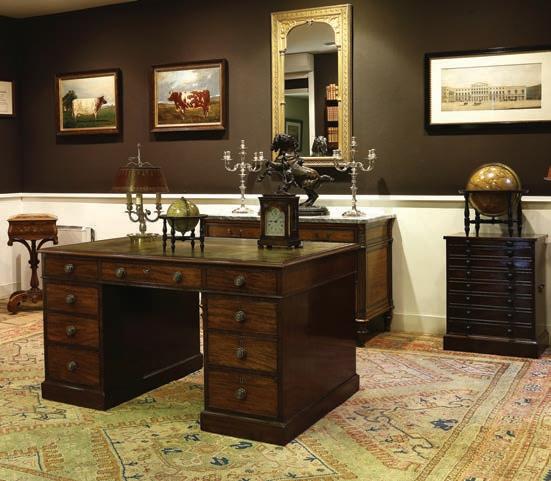
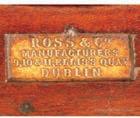
Georgian chamber horse exercise chair (pictured)
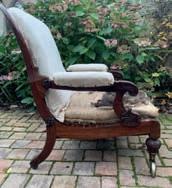

Unusual Georgian to William IV architectural features eg doors, door frames, over door pediments. 18th century staircase spindles and handrail needed. Anything Georgian or Regency with lots of character considered.
Rectangular Georgian fanlight.
Four identical reclaimed Georgian wooden sash windows with boxes, approx 60 high x 37 wide.
Marble fire surrounds from 1750 to 1850ish. White or coloured. Bullseyes, William IV styles etc. Brass Regency reeded fire insert and Victorian griffin grate (pictured)
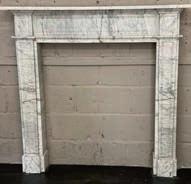

Human skull, stuffed crocodile/ alligator. Grand tour souvenirs.
For East Yorkshire town house renovation. or tel 07958 333442


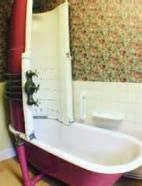








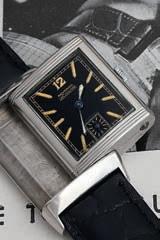
vintagejewellery@yahoo.co.ukVINTAGE•WANTED•WRISTWATCHESortel07958 333442 Omega Seamasters and pre-1980s Omegas in general. IWC and Jaeger LeCoultres, all styles. Looking for Reversos. American market filled and 14k pieces possibly, at the right price. Breitling Top Times, Datoras and 806 Navitimers. Pre-1960s Rolex models, with a focus in pre-war tanks, tonneaus etc. Gold or silver/steel. Also World War I Rolex 13 lignes etc. Princes. Longines, Tudors and Zeniths, pre-1970. Even basic steel models in nice condition. All the quirky oddities like Harwoods, Autorists, Wig Wag, Rolls etc, and World War I hunter and semi-hunter wristwatches. Early, pre-war ladies’ watches also wanted by Rolex, Jaeger LeCoultre etc. Prefer 1920s/30s deco styles, but early doughnuts also considered. Yorkshire based, but often in London and can easily collect nationwide.
~ WANTED ~ vintagejewellery@yahoo.co.uk
Tel: +44 1427 668389 Email: enquiries@hemswell-antiques.com Hemswell Antique Centres, Caenby Corner Estate, Hemswell Cli Europe’s largest choice of antiques & www.hemswell-antiques.comcollectablesThecentresareopen7daysaweek10am-5pmOnline ANTIQUE COLLECTING 65ANTIQUE COLLECTING 65 LENNOX CATO ANTIQUES & WORKS OF ART EST: 1978 1 The Square, Church Street, Edenbridge, Kent TN8 5BD 01732 865 988 or 07836233473 www.lennoxcato.comcato@lennoxcato.com vintagejewellery@yahoo.co.ukVINTAGE•WANTED•WRISTWATCHESortel07958 333442 Omega Seamasters and pre-1980s Omegas in general. IWC and Jaeger LeCoultres, all styles. Looking for Reversos. American market filled and 14k pieces possibly, at the right price. Breitling Top Times, Datoras and 806 Navitimers. Pre-1960s Rolex models, with a focus in pre-war tanks, tonneaus etc. Gold or silver/steel. Also World War I Rolex 13 lignes etc. Princes. Longines, Tudors and Zeniths, pre-1970. Even basic steel models in nice condition. All the quirky oddities like Harwoods, Autorists, Wig Wag, Rolls etc, and World War I hunter and semi-hunter wristwatches. Early, pre-war ladies’ watches also wanted by Rolex, Jaeger LeCoultre etc. Prefer 1920s/30s deco styles, but early doughnuts also considered. Yorkshire based, but often in London and can easily collect nationwide. •WANTED• for epic East Yorkshire Georgian townhouse restoration. vintagejewellery@yahoo.co.uk or tel 07958 333442 Signed and unusual furniture. Georgian, Regency, William IV. Sofa / Pembroke / side tables, library furniture / bookcases. Also Victorian campaign chests, armchairs etc. Ross of Dublin, Morgan & Sanders, Williams & Gibton, James Winter, Hill & Millard and many others. J Alderman. Daws and George Minter reclining chairs. Shoolbred/ Hamptons / Cornelius Smith Victorian armchairs. Marble fire surrounds. Georgian / Regency/ William IV. Bullseyes etc. Exceptional Georgian / Regency fire grates Sash windows x 4 identical. Georgian reclaimed. Approx 58” high x 36” wide. Wide reclaimed floorboards. Approx 100 m2. Early decorative oil / gas / electric light fittings. Ceiling, wall or table. Early gasoliers. Colza lamps. Gimble lamp. Roland Ward, Van Ingen taxidermy. Human skull. Hippopotamus skull. Stuffed crocodile / alligator. Quirky architectural features. Regency columns, corbels, marble and stone pieces, over door pediments, folding/rolling multi part Georgian room dividing doors. Victorian canopy shower bath. Decorated toilets etc Unitas, Simplicitas, Deluge etc. Decorated basins x 3. PM Antiques & Collectables are a modern and innovative antiques retailer based in Surrey. Specialising in a wide array of collector’s items, including contemporary art, entertainment and memorabilia, vintage toys, decorative ceramics, watches and automobilia. We Buy & Sell pm-antiques.co.uk Contact 01932phil@pm-antiques.co.ukus:640113 PMAntiques2015 PM_Antiques
Queen Elizabeth II
Antique Collecting magazine shares the country’s sorrow at the death of Her Majesty Queen Elizabeth II and joins it in its gratitude for her long reign of service

66 ANTIQUE COLLECTING IN LOVING MEMORY Queen Elizabeth II
(1926-2022)


Ancient Art, Antiquities & Coins Auctions held www.timelineauctions.comAcceptingquarterlyentriesMayfair,London MEDIEVAL LIMOGES PROCESSIONAL CROSS 13TH-15TH CENTURY A.D.


Over 70 specialist dealers will present a wide array of pieces from the modern, eclectic and quirky to the traditional and classic. Offering an extraordinary choice for creating stylish interiors and inspiring collections. Every piece for sale is vetted by experts to ensure you can buy with confidence. To plan your visit and book tickets visit Olympia-art-antiques.com Come & See Us


